A self-proclaimed ‘citizen of the planet’, Richard Neutra (1892–1970) was an enthusiastic student of the local cultures and traditions that he had visited during his international travels.Footnote 1 The Ukrainian architect Gregori Warchavchik (1896–1972), whose emigration to Brazil in 1923 paralleled Neutra's to California, noted that even before Neutra arrived in the United States he had already cultivated a deep respect for the architecture and history of world cultures:
Asia, Africa, Europe, Central and South America are familiar to him, [and] global circumstances are close to his heart. Travel, study, and work in many places have unusually widened his horizon.Footnote 2
Like other architects of his generation, the first source beyond his own Austro-Hungarian tradition to have inspired Neutra early on came from the ancient cultures of the Mediterranean region. During a 1912 tour of the Adriatic coast, the architecture of Renaissance Italy in general, and of Michelangelo and Palladio in particular, sparked in the young Neutra a ‘general enthusiasm for the treasures of Italy’.Footnote 3 Later, during his tour of duty as a reserve lieutenant in the Austro-Hungarian Imperial Army (1914–18), in which he was stationed on the eastern shores of the Adriatic Sea, Neutra recorded the region's historic Ottoman architecture in his early sketch diaries.Footnote 4
Like his mentor Frank Lloyd Wright (1867–1959), Neutra also became keenly interested in Japanese design, which he had begun to explore long before he visited Japan for the first time in 1930.Footnote 5 This fact is clearly demonstrated in the letters exchanged in the early 1920s between Neutra, then still living in central Europe, and Rudolph Schindler (1887–1953), who had already emigrated to the United States.Footnote 6 Neutra sustained this interest in Japanese culture throughout his career; following his arrival in Los Angeles (in 1925), he travelled several times to Japan, and during these visits he collected architectural drawings of recently-constructed buildings.Footnote 7 He also recorded these visits with multiple travel sketches.Footnote 8 Knowing that Neutra was a long-time student of Japanese design, David Engel invited him to write the forward to his 1959 book Japanese Gardens for Today, in which Neutra demonstrated his great respect for, and erudite study of, this Asian tradition.Footnote 9 He also left unpublished manuscripts on the subject of Japanese architecture and design.Footnote 10 In addition to Japan, Neutra was also fascinated by the indigenous architecture of Africa, central Asia and the Indian subcontinent, as well as the shared history and traditions of California, Latin America and Spain. His study of the architecture of these traditions, combined with his exposure to Otto Wagner, Adolf Loos, Josef Maria Olbrich, Josef Hoffmann, Erich Mendelsohn, Louis Sullivan, Holabird and Roche and Wright himself, constituted what he called a ‘mixed-up paternity’ that deeply affected his view of the relationship between historic and Modern forms.Footnote 11
From this plurality of sources, Neutra had also learned to appreciate open-air living and direct connection between human beings, architecture and nature. Inklings of a nascent interest in nature and life in the outdoors can already be seen in a few of Neutra's earliest travel sketches dating from the early 1910s, as well as in his 1915 design for an officers tea house, which was constructed in Trebinje, Albania. From Otto Wagner, Neutra had learned ‘to cherish the site, and to give allegiance to the wider surrounding landscape’.Footnote 12 Barbara Lamprecht has determined that, as a young man in Vienna, Neutra had studied Gestalt psychology, from which he learned that architecture can be used to manipulate human perception of space;Footnote 13 similarly, from German psychologist Wilhelm Wundt's Principles of Physiological Psychology (1874), he had learned about human physiological responses to the environment.Footnote 14 In 1919, while employed in Stafa, Switzerland, with Otto Froebel's plant nursery and landscaping firm, he came into contact with Gustav Ammann, who introduced Neutra to botany and landscape architecture.Footnote 15 His fascination with these professions was evident in his work in the early 1920s, including his landscaping scheme (1921–24) for Mendelsohn's Einstein Tower in Potsdam, his design (1922) for the Forest Cemetery in Luckenwalde (Germany) and two private residential gardens (both 1922) in Berlin, one for Ernst Freud, and the other for the parents of Ernst's wife, Lux.Footnote 16
Throughout his career, Neutra's architectural drawings and travel sketches reveal this obsession with natural elements. Stylistically similar to the landscapes painted by Gustav Klimt, whom he had known personally, Neutra's own renderings of natural elements such as vegetation, sky and clouds are often in a heavy, romanticized and highly textured manner, which can even obscure the architecture itself.Footnote 17 Wright was also an obvious source in Neutra's developing ideas of connecting architecture to landscape. In his autobiography, Neutra recalled that, even prior to arriving in the American Middle West and to living and working with Wright at Taliesin (in 1924), he had already begun to romanticise about the region's landscape and the ways in which Wright had woven architecture and nature together in an indissoluble relationship.Footnote 18 Neutra's ability to acknowledge local culture, tradition, climate and landscape in his architectural design had thus begun developing long before his arrival in Southern California in 1925.
It was in Southern California, however, that Neutra found a new cultural, climatic and historic context that would serve as a key reference in his work throughout his career. From his arrival there until his death in 1970, he researched the historic architecture and the diverse cultures of the American Southwest, Latin America and Spain, and applied what he learned in his own work. In order to illustrate that aspect of Neutra's approach, this article consults several archival sources: unpublished manuscripts kept in the Richard and Dion Neutra Papers at the University of California, Los Angeles (UCLA); articles that Neutra wrote on Spanish and Latin American topics for publication both in North American journals, such as Architectural Forum, Progressive Architecture and House and Home, and in Spanish journals, such as Boletín de Información de la Dirección General de Arquitectura and Informes de la Construcción; articles written about Neutra by Spanish or Latin American authors, such as Francisco Prieto Moreno (Spain), Carlos Obregón Santacilia (Mexico) and Gregori Warchavchik (Brazil);Footnote 19 books that Neutra published, such as Architecture of Social Concern (1948), Survival through Design (1954), Life and Human Habitat (1956) and Realismo biológico: un nuevo renacimiento humanístico en arquitectura (1958).Footnote 20 This article will also pay attention to the multiple travel sketches that Neutra used to document his journeys throughout the American Southwest, Latin America and Spain,Footnote 21 and to the projects – both built and unbuilt – that Neutra designed for clients in Spain and Latin America.
‘CALIFORNIA CALLS YOU’: SPANISH COLONIAL MEETS INTERNATIONAL STYLE
In his 1962 autobiography, Neutra admitted that, like Loos, he had been drawn as a young man to the United States in part by the technological innovations of the American industrial system.Footnote 22 This fact is clear in his first published books Wie Baut Amerika (1927) and Amerika (1930).Footnote 23 For this reason it was inevitable that Neutra would travel first to the industrial capitals of New York (October 1923) and Chicago (February 1924). Nonetheless, these cities were clearly not the ‘idyllic tropical island’ of which he had dreamt while living in Central Europe, ‘where one does not have to fear the winter … [and] can have a free spirit’.Footnote 24 Instead, as Thomas Hines has pointed out, Neutra's ultimate destination in the United States had always been the warm-climate regions of California.Footnote 25 Neutra himself remembered that, while strolling one day along Bahnhofstrasse in Zurich, he passed the window of a travel agency that displayed a poster with the slogan ‘California Calls You’.Footnote 26 Despite his then-rudimentary English, he understood the message: ‘[I] put two and two together and concluded that I was supposed to come to California.’Footnote 27 For him, ‘Los Angeles was a very peculiar spot and vantage point. It was clear that this romantically Spanish colonial country of California might […] become a prototype industrial and research area’, and that it would ‘turn out [to be] the most contemporary southland in search of a way of life for this day’.Footnote 28
In 1960, Esther McCoy noted that this southward gaze typified Neutra's persistent search for timeless source material that he could merge with Modern architecture: ‘his architecture is an eternal search for the southland, [the] cradle of civilization’.Footnote 29 Neutra's books such as Architecture for Social Concern (1948), Survival Through Design (1954), Life and Human Habitat (1956), Realismo biológico (1958) and Life and Shape (1962), demonstrate his attraction to, and first-person familiarity with, warm-climate regions around the globe, and in these texts he made regular mention of places as geographically diverse as the Caribbean, sub-Saharan Africa and Polynesia. According to Lamprecht, he traced human origins back to the African savannah, and he believed that every modern human being innately longs for this place of origin.Footnote 30 He believed that humankind
loves to immigrate to the south, or to conquer it. […] Like all Nordic barbarians we want to go to sunny Hellas, or to the land where the lemon blooms and no icy storms trouble us.Footnote 31
Thanks to its bucolic climate, Neutra likened Southern California to the savannah, as if it were the New World version of this place of origin.Footnote 32
Neutra's early interest in the American Southwest and Mexico was evident in his transatlantic correspondence with Schindler prior to emigrating to the United States. While central Europe was quickly descending into war at a continental scale, Neutra kept abreast of political developments in the Mexican Revolution. In a letter to Schindler dated 4 May 1914, he expressed his admiration for Schindler's early successes in America, as well as the advances then being made by the ‘Mexican insurgents', quipping that, if Schindler's successes in the New World continued, he would soon replace Victoriano Huerta as Mexico's president.Footnote 33 Neutra's reading of current events in Mexico had been acutely prescient as, just two months later, Huerta resigned. Neutra's interest in Mexico and the American Southwest seems to have originally been stirred by Schindler's report of his own tour, in August and September of 1915, to Denver, Salt Lake City, Taos, Santa Fe, the Grand Canyon and Los Angeles; on this tour, Schindler also visited the Panama-California Exposition in San Diego and the Panama-Pacific Exposition in San Francisco.Footnote 34 Neutra's response contrasted the dismal situation of Europe, then in the midst of the First World War, with the relative peace and calm he idyllically imagined Schindler to be enjoying in the American Southwest: ‘You are on the Mexican border and we bang away at each other mechanically each half year’.Footnote 35 Later, when Neutra wrote to Schindler to request a description of outstanding American architecture other than that of H.H. Richardson, Wright and Sullivan, Schindler responded that there was no such thing as American architecture, since skyscrapers ‘have nothing human about them’, and the rest of the architecture produced in the United States adhered to European styles that were imported to the New World.Footnote 36 Instead, for Schindler,
the only buildings which testify to the deep feeling for soil on which they stand are the sun-baked adobe buildings of the first immigrants and their successors—Spanish and Mexican—in the Southwestern part of the country.Footnote 37
It was upon arriving in Los Angeles in 1925, as Lauren Weiss Bricker has pointed out, that Neutra discovered that by the beginning of the twentieth century architects of the American Southwest had developed an acute awareness of the natural landscape of the region.Footnote 38 This awareness had arisen principally from the work of naturalist John Muir (1838–1914) and the creation of the National Parks.Footnote 39 This interest in nature was compatible with the values Neutra had inherited from fin-de-siècle Vienna, and he visited many of the National Parks in person: the Grand Canyon in 1925 (en route from Taliesin to Los Angeles);Footnote 40 Joshua Tree in 1938;Footnote 41 Death Valley in 1939 and 1957;Footnote 42 Zion in 1951;Footnote 43 and Yosemite (date unknown).Footnote 44 He demonstrated his appreciation for the natural beauty of the National Parks in his Visitor's Center (1961) at the Painted Desert and Petrified Forest in Arizona, designed in partnership with Robert Alexander. They organised the rangers' homes in tight groupings in order to provide mutual shelter and conservation of resources, and they employed interior patios in order to provide sunlight and fresh air, while still protecting the privacy of the individual residents.Footnote 45 Neutra himself attributed these strategies to the lessons he had learned from the architecture of the Pueblo and Spanish Colonial heritages.Footnote 46
Prior to his arrival there in 1925, Neutra's dreamy concept of Southern California had been a by-product of his own conjecture, his desire for warm climates, vague reports sent to him by Schindler and the propaganda of travel agencies. Although tenuous, this notion was squarely in line with what Carey McWilliams, writing in 1948, called the ‘fantasy heritage’ that had been imagined by a white majority to endow the region with an identity specific to itself.Footnote 47 Matthew Bokovoy has described this phenomenon as anti-historic, and states that it had been invented for the economic development of Southern California.Footnote 48 Phoebe Kropp has pointed out that, although not entirely fabricated, such a sentimental attitude had resulted from selective interpretations of the region's history by its various constituent groups, and that it had reflected the dual need to respect local history and to establish for Southern California a unique sense of identity.Footnote 49
When Neutra arrived in Los Angeles in 1925, he discovered that most buildings designed and built in the region in the previous years tended to follow the lead of Bertram Grosvenor Goodhue (1869–1924) and the highly romanticised ‘Spanish Style’ of his Panama-California Exposition in San Diego (1915).Footnote 50 This resurgence of interest in California's and Mexico's shared colonial past was not always the result of mindless mimicry. Cristina López Uribe has pointed out that architects on either side of the border often deliberately blended local historic forms with a sensitivity to materials and function, inspired by both Rationalism and the Arts and Crafts movement, which had been imported from Europe and the American Middle West; she also concluded that, in the 1920s and 1930s, architects from Mexico and California, including José Villagrán Garcia, Enrique del Moral, Carlos Obregón Santacilia and Luis Barragán, had not merely used the old colonial forms ‘in a nostalgic revivalist spirit, but also sometimes reframed them within a modern conception’.Footnote 51 In a similar vein, Kropp has noted that
California's popular Spanish past is a ‘memory box’ full of varied, individual contributions, some of which represent competing narratives. It is a collection to which Southern Californians return again and again to assemble regional meanings.Footnote 52
Following a comparable track, Neutra would demonstrate by the 1930s the agility with which he could enhance the Modernist ideas he had learned in Central Europe and the American Middle West with a sensitivity towards the local landscape, history and traditions of the American Southwest. His son and collaborator, the architect Dion Neutra, has attributed this responsiveness to Neutra's abstract interpretation of the inherent spatial qualities of Spanish Colonial architecture, and to his ability to transcend formalist mimicry.Footnote 53 Dion has also noted that, when clients would hire his father to design a ‘Spanish-Mediterranean’ house for them, he would probe the client to identify the spatial qualities of this style that the client would find most appealing; and he would then use those spatial qualities as the generative idea for a house that surpassed questions of style, while still fulfilling the client's requirements.Footnote 54 According to Hines,
it was typical of Neutra and his generation that except occasionally in the most minimal abstractions, their attempts to recapture the area's rich Hispanic tradition included no allusions to Spanish Colonial architecture in any explicitly communicable form.Footnote 55
As Neutra searched for ways to create Modern forms using the local and vernacular architecture of the American Southwest, he discovered precedents in Wright's Californian work, as well as in that of three other émigrés, whose arrivals on the West Coast had preceded Neutra's: Schindler, Irving Gill (1870–1936) and Gordon Kaufmann (1888–1949). Wright's work, which Neutra had first seen in 1914, in the pages of the Wasmuth Portfolio, was always a source for Neutra.Footnote 56 The house for Aline Barnsdall on Olive Hill in Los Angeles (1921) and the textile block houses (Los Angeles and Pasadena, 1923–24) were particularly important in this transfer, since they had all been projects under development at the time when Neutra was working for Wright.Footnote 57 In these projects, Wright clearly referenced sources extracted from the American Southwest, claiming in his Autobiography that the Barnsdall House was ‘conceived and desired as a California Romanza’.Footnote 58 According to Wright's son Lloyd, Wright depicted Aline Barnsdall as an ‘Indian princess’ in the abstract relief he designed above the fireplace; Lloyd also stated that the house's forms followed Pueblo architecture.Footnote 59 Donald Leslie Johnson has agreed, citing the architecture of the Navajo, Walpi and Pueblo Indians as Wright's sources for the Barnsdall and the textile block houses.Footnote 60 Alice Friedman, moreover, has cited the adaptability of Pueblo architecture to the arid climate of the American Southwest, as well as the theatrical qualities of interior-exterior spaces found in Pueblo settlements, as likely reasons why Wright chose this architecture as a source for the Barnsdall House.Footnote 61 Schindler, who oversaw the design and construction of these Southern Californian projects in Wright's absence, later recalled that, in designing the Barnsdall House, Wright was clearly thinking about Maya sources.Footnote 62
In 1915, after Schindler had visited the expositions in San Diego and San Francisco and the pueblos of Taos (New Mexico) on his first travels through the American Southwest, he returned to Chicago and began to experiment with this fusion in a scheme for an adobe house (unbuilt) he designed that same year for Dr T.P. Martin in Taos.Footnote 63 In this scheme, Schindler reinterpreted the changing levels and vertical connection of interior spaces of Loos's Raumplan according to the spatial sequencing he discovered in Taos.Footnote 64 Later schemes followed a comparable approach. The model he constructed in 1916 during the initial design phases of the Hampden Club (Chicago), which he designed while employed by the firm Ottenheimer, Stern and Reichel, likewise reflected the lessons he had learned from Pueblo architecture.Footnote 65 Robert Sweeney and Judith Sheine have described the tilt-slab concrete walls of his Schindler-Chase House in Los Angeles (1921) as a translation of the lessons he had learned on his 1915 tour of the American Southwest.Footnote 66 His Pueblo Ribera Courts in La Jolla (1923) were likewise inspired by his 1915 visit to Taos.Footnote 67 According to McCoy, this fusion then became a hallmark of Schindler's work in the 1930s.Footnote 68
Irving Gill was also a source for Neutra. Upon arrival in Los Angeles in 1925, Neutra enjoyed ‘exploring Southern California and discovering, in particular, Gill's abstract early twentieth-century interpretations of Spanish Colonial architecture’.Footnote 69 His journey to Southern California in 1893, moreover, had prefigured Neutra's own: both men arrived in California after brief periods in New York and Chicago, where both had been connected with Sullivan and Wright.Footnote 70 Neutra, like Schindler, also noticed striking formal similarities between Gill's works and those of Loos.Footnote 71 Both Gill and Loos had been inspired by Sullivan's work and theories, and the two may have met personally in Chicago during Loos's visit to the Middle West, precisely when Gill was employed in Sullivan's studio.Footnote 72 It was Gill's austere, white, cubic forms that reminded Neutra and Schindler of the work of their Viennese mentor, and provided them with evidence that Modernist ideas could be merged with the vernacular forms of Southern California and the American Southwest. One of Gill's most noteworthy buildings, the Dodge House (1914–16; Fig. 1), was located at 950 Kings Road in Los Angeles, only a few blocks from the Schindler-Chase House (835 Kings Road), where Neutra lived with his family for the first five years of his career in the city. Hines has suggested that the flat roofs, ribbon windows, stuccoed façades and lack of ornament of Gill's Dodge House, and also his Banning House (Los Angeles, 1910) and the Horatio West Court (Santa Monica, 1919), demonstrated to Neutra a successful blending of the lessons he had learned from Loos with the forms of the Spanish Colonial style. The Dodge House made a particularly lasting impression on Neutra,Footnote 73 and in 1970 he ardently, yet ultimately unsuccessfully, protested against the building's demolition.Footnote 74

Fig. 1. Los Angeles, Irving Gill's Dodge House, main entrance (photograph by Thomas Hines; with permission)
One of Gill's early Southern California commissions (received in 1899) had been the restoration of the San Diego Mission, an authentic specimen of the austere, Franciscan variety of the Spanish Baroque. Gill's investigation of this building became a pivotal moment in his career, and his subsequent projects increasingly appropriated elements of this historic style.Footnote 75 While working on this project, however, Gill also studied the Spanish Colonial style; both the archival evidence and Gill's body of works demonstrate that he purposefully avoided historicist mimicry, as noted by Gill's contemporary George Wharton James:
Early impressed by the wonderful climate and scenic environment of California, he sought, not as so many architects have done, to imitate […] but to absorb […] the original sources of their inspiration.Footnote 76
As Hines noted, at its core, Gill's unique version of Modern architecture represents a search for ‘the contemporary implications of California's Hispanic architectural legacy’.Footnote 77 As for Neutra, he was so impressed by this fusion that, in 1930, he used his own photographs of Gill's work to illustrate his second full-length publication, Amerika (Fig. 2).Footnote 78

Fig. 2. Santa Monica, Irving Gill's Horatio West Court (photographs by Richard Neutra ca. 1929; from Neutra, Amerika; courtesy Dion Neutra, Architect © and Charles E. Young Research Library, UCLA)
In order to provide for his growing family, Neutra took employment in 1925 with the English-born architect Gordon Kaufmann, who had arrived in California in 1914.Footnote 79 This architect also made a considerable impression on Neutra. In the early 1920s, Kaufmann had collaborated with Reginald Johnson and Roland Coate, and from Johnson he had learned to appreciate Goodhue's use of the Spanish Colonial style in the 1915 Panama-California Exposition in San Diego.Footnote 80 Cristina López Uribe has recognised that since the First World War, when travel to the Mediterranean Basin was not feasible, the so-called ‘Spanish Colonial’ had provided Californians with a locally available ‘Mediterranean’ theme.Footnote 81 Consequently, following his separation from Johnson and Coate in 1924, Kaufmann adopted a style of architecture that was loosely Mediterranean;Footnote 82 Neutra described it as following the ‘early Florentine Renaissance style’, and reminisced that ‘the marvelous large illustrated publications that form the source material awaken my longings for Italy.’Footnote 83 It was while he was employed in Kaufmann's studio that he produced working drawings for the Eisner House in Los Angeles (1925),Footnote 84 a building that features reflecting pools, clay tile roofs, white-washed stucco walls and three vegetated interior courtyards.Footnote 85 Yet he continued to hold Kaufmann in high esteem, in spite of the fact that Kaufman's 1920s projects quoted the historic styles of the faraway Mediterranean region quite literally, and he did so even long after resigning his post in Kaufmann's studio.
During the first decade of his Los Angeles career Neutra designed a series of projects that reflect the ongoing maturation of his own modernist aesthetic. In addition to his well-known projects in Los Angeles for the Jardinette Apartments (1927) and the Lovell Health House (1927–29), he produced a competition entry (designed with Schindler) for the League of Nations Building in Geneva (1926), a series of drawings for the urban utopia that he called ‘Rush City Reformed’ (mid-1920s), as well as the unbuilt schemes for the Colton Theatre (1927) and a skyscraper for the National Trading Centre (1927), both in Los Angeles.Footnote 86 At the same time as he was developing these avant garde projects, however, he also followed the examples set by Wright, Schindler, Gill and Kaufmann in seeking a potential synthesis between his own Modern ideas and the architecture of California's colonial past. In 1927, the same year he was working on the Jardinette Apartments and the Lovell Health House, he supplemented the insufficient wages he was earning from Kaufmann by designing several small houses (unbuilt) for properties in and around Santa Monica (Fig. 3).Footnote 87 These houses, with their arches, loggias, whitewashed stucco and pitched roofs clad in clay tiles, exchanged the modernist aesthetic for stylistic experimentation with Spanish Colonial forms.
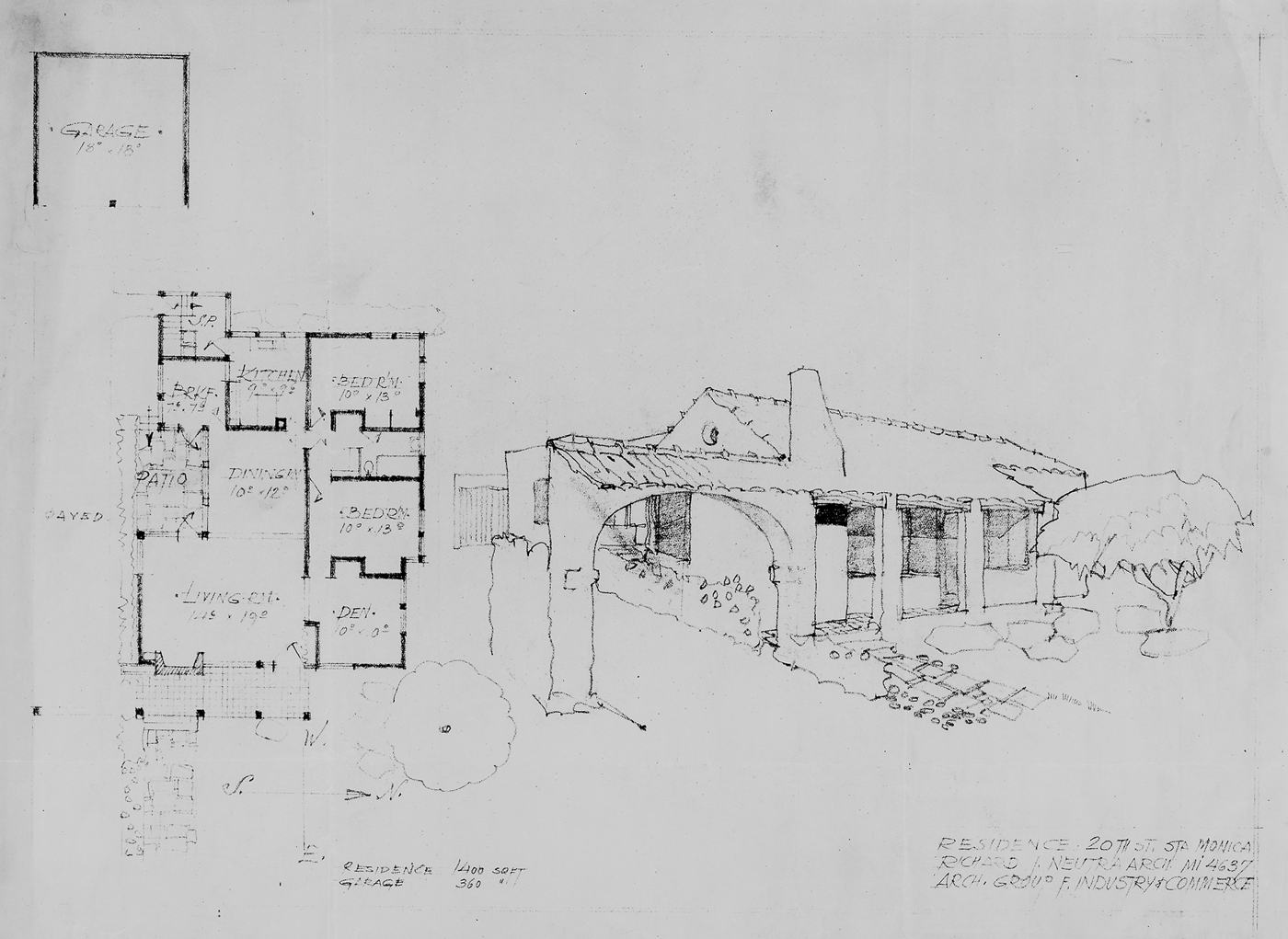
Fig. 3. Richard Neutra, sketch for a single-family house (c. 1927; unbuilt) in Santa Monica (courtesy Dion Neutra, Architect © and Charles E. Young Research Library, UCLA)
A similar attempt to incorporate historic forms can be seen in the drawings made by Neutra and Schindler in 1928 for a civic centre in Richmond, California.Footnote 88 Their description of this design indicates that they intended to reject the historicist mimicry of monumental civic buildings from the past, such as the Doge's Palace in Venice or the Baths of Caracalla in Rome, ostensibly because ‘we are now living in a mechanical, rational, abstractly imaginative age and our architecture should bear the imprint of the age’.Footnote 89 Notwithstanding this claim, McCoy has pointed out that the design for these buildings was still deeply indebted to Goodhue's stylistic and planimetric formalism, and she also noted that
there was no trace of Mendelsohn in them, or Wright, or Schindler's early houses, or even the visions of flight found in Neutra's theoretical Rush City, which by then he had begun. The formalism of the layout would have puzzled Loos.Footnote 90
Working on his own, Neutra also experimented with vernacular forms of the American Southwest in his never-constructed project for the California Lambs Club in Hollywood (1926) (Fig. 4), which he designed for the Fidelity Construction Company.Footnote 91 Unlike the purely historicist styling of the houses in Santa Monica, for this project he juxtaposed Spanish Colonial and Modern forms: he superimposed heavy volumes – articulated in a way reminiscent of Wright's buildings such as the Imperial Hotel in Tokyo and the Larkin Building in Buffalo – over a much lighter base of porticoes and arcades. A promotional brochure advertised this work as ‘extreme Spanish design’.Footnote 92

Fig. 4. Richard Neutra, sketch of the California Lambs Club (1926; unbuilt) in Los Angeles, as published in Dione Neutra, Richard Neutra, Promise and Fulfillment, 1919–1932 (courtesy Dion Neutra, Architect © and University of Southern Illinois Press)
In 1926, Neutra followed the stylistic hodgepodge of the California Lambs Club with his much more elegant, yet largely-unknown (perhaps because it was again unbuilt), addition to the Baum family house in Santa Monica (Fig. 5).Footnote 93 The addition was designed as a Rationalist prism containing a gymnasium and a playroom. With its programmatic emphasis on wellness, physical activity and exposure to fresh air and sunlight through ventilated and louvred screens, as well as its flat roof, horizontal lines and lack of ornament, it was faithful to the Modernist agenda. However, it also complemented the existing Spanish Colonial quinta (a traditional country house), which Hines has noted
shows in its proportions and attention to detail how deftly Neutra could add a contemporary wing to a traditionalist structure without compromising the original building or his own modernist principles.Footnote 94
Later, his admittedly less successful addition to the Rajagopals House in Los Angeles of 1934 (Figs. 6, 7 and 8) similarly represents his struggle to merge Spanish Colonial and Modern forms.Footnote 95 A more sensitive juxtaposition of Modern and historic forms, however, occurred in the 1936 Ruben House in Los Angeles (although in this case the historic style was Shingle and not Spanish Colonial).Footnote 96

Fig. 5. Richard Neutra, sketch for the Baum family house showing the addition of a gymnasium (1926; unbuilt) in Santa Monica (courtesy Dion Neutra, Architect © and Richard and Dion Neutra Papers, UCLA)
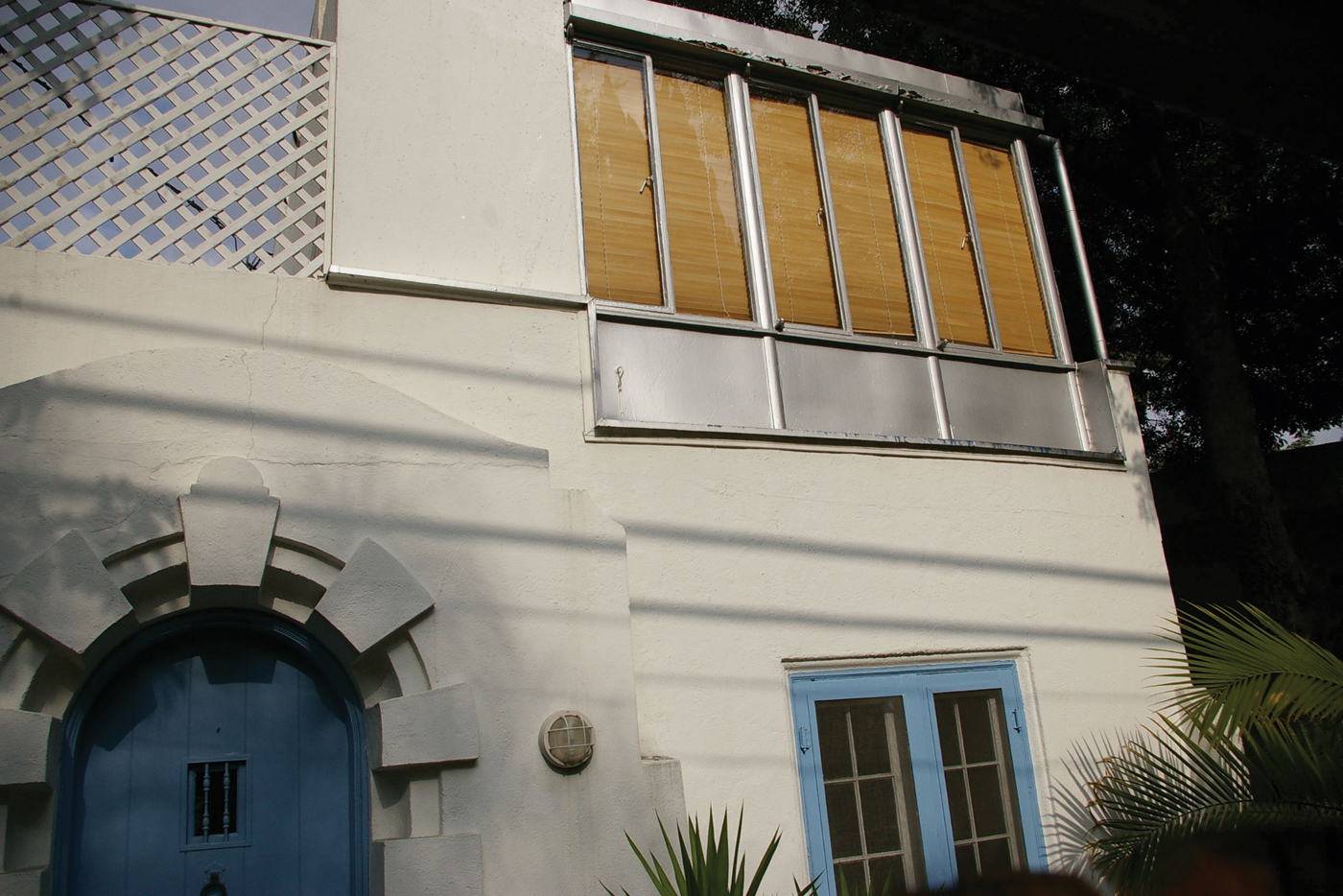
Fig. 6. Los Angeles, Richard Neutra's Rajagopals House, showing Neutra's second-floor addition in the upper right (author's photograph, 2009)
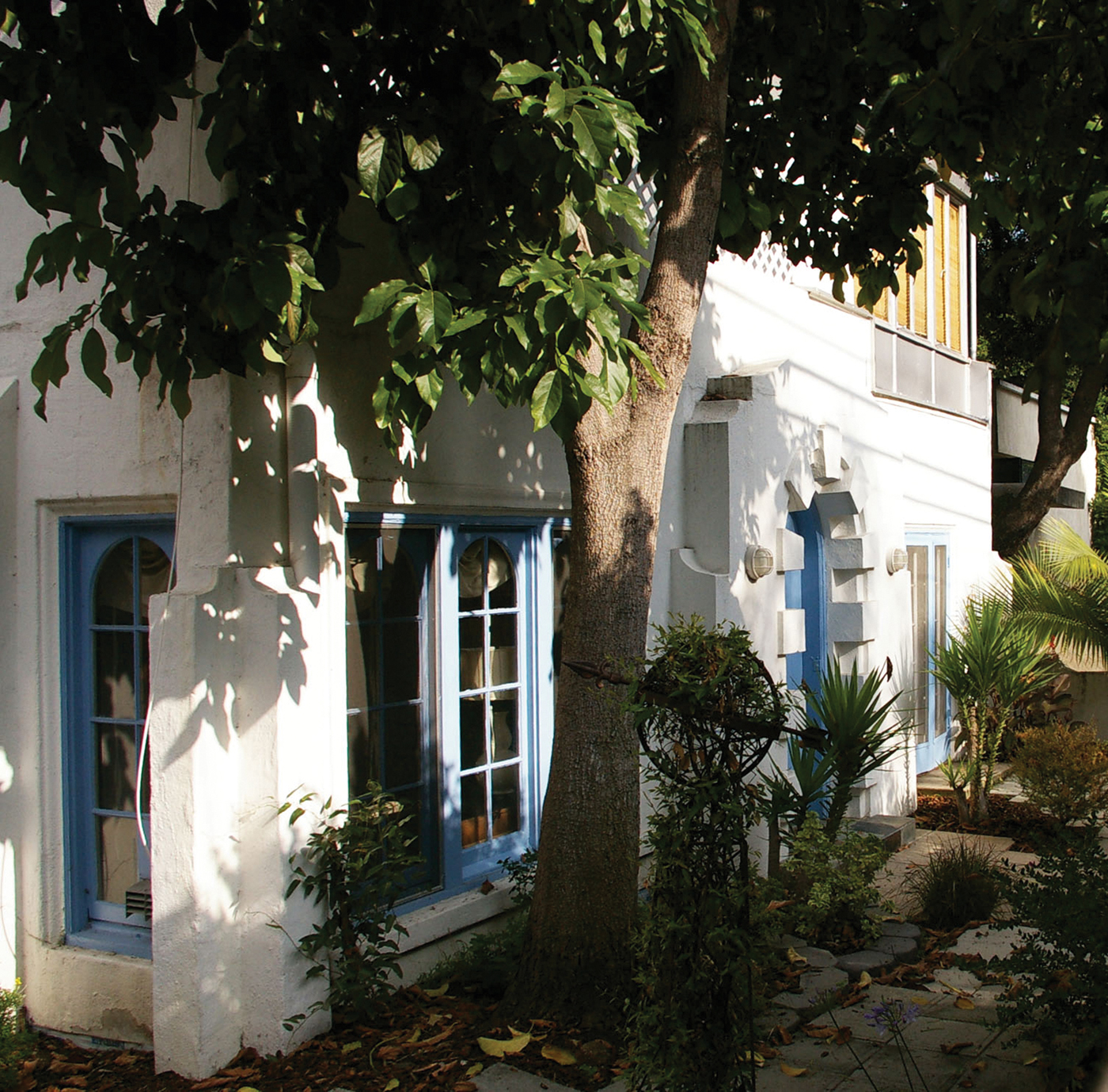
Fig. 7. Los Angeles, Richard Neutra's Rajagopals House (author's photograph, 2009)
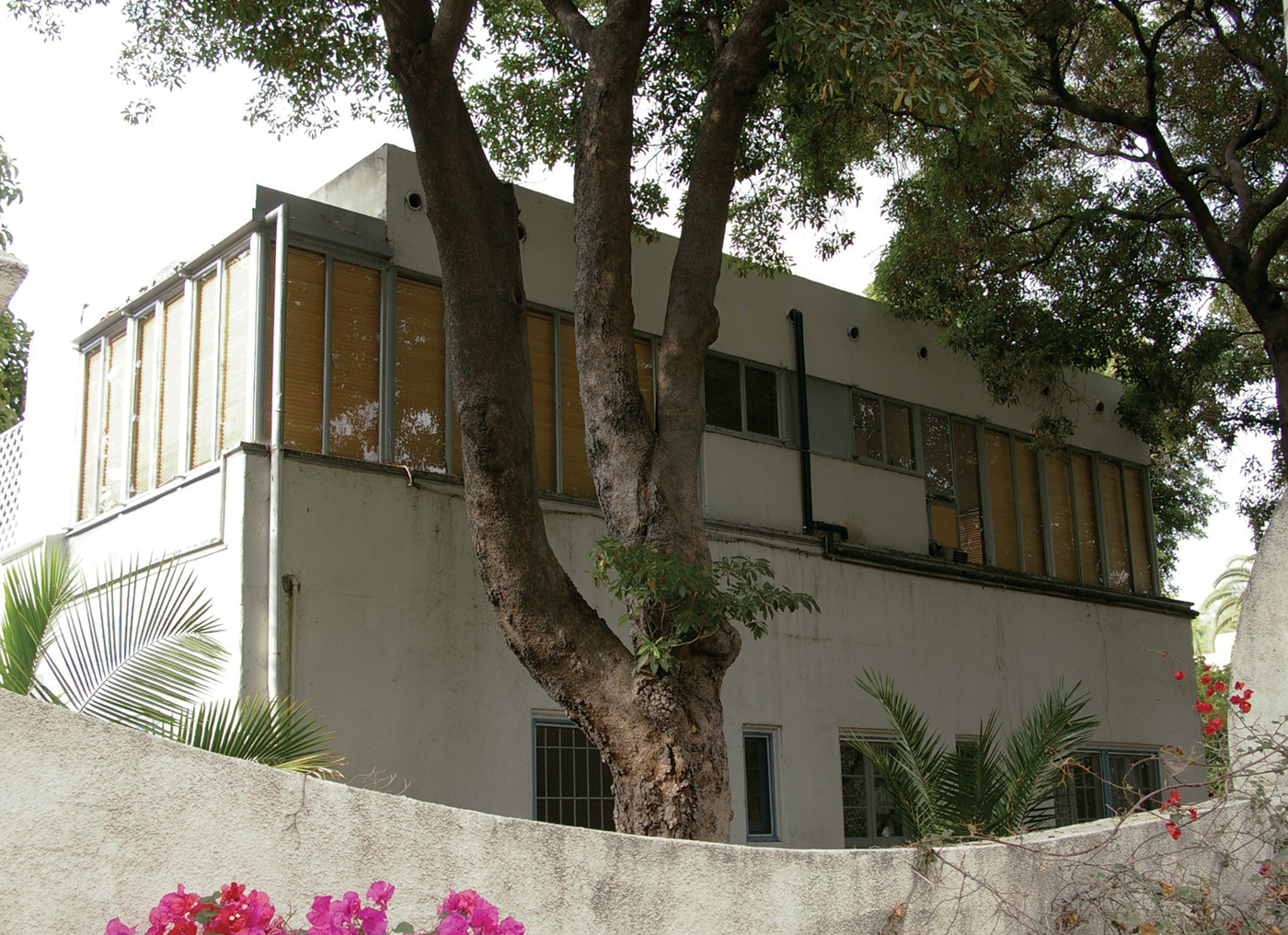
Fig. 8. Los Angeles, Richard Neutra's Rajagopals House (author's photograph, 2009)
Neutra's attempts to fuse the spirit of the architecture of the American Southwest with his own Modern ideas gradually shifted, from the formalistic mimicry of the Santa Monica houses and sensitive juxtaposition of contrasting forms in the Baum House, to a more meaningful synthesis of Modern and traditional ideas. He had adapted vernacular Californian sleeping porches for use in the 1927–29 Lovell Health House,Footnote 97 but in his Corona Avenue School of 1935 in Los Angeles he used abstract reference to California's colonial architecture. Undoubtedly, he had climatic concerns and pedagogical innovation in mind when he designed the school's covered exterior pathways, which connect the individual classrooms.Footnote 98 McCoy, however, has pointed out that they are also an interpretation of the ‘arcaded passages’ that were common in Spanish Colonial architecture.Footnote 99 Other projects in Los Angeles, such as the VDL Research House (1932–39) and the von Sternberg House (1937; demolished), again deftly incorporate strategies from Spanish Colonial architecture, such as the patio (discussed further below). The forms of Neutra's Strathmore Apartments (1937) were also inspired, as Hines has noted, by Spanish Colonial architecture, and by the architecture of the cultures indigenous to the American Southwest:
Long impressed with the stacked mega-structures of the Pueblo Indians and of the more recent systems of courtyard housing in Southern California, Neutra designed Strathmore as a modernist updating of both vernaculars.Footnote 100
In addition to his architectural designs, his travel sketchbook also reveals that, up to his death in 1970, Neutra continued to be intrigued by the vernacular architecture of the American Southwest, as well as by the Spanish Colonial and Baroque styles. On his many journeys through California and Latin America, he recorded views in his sketchbook of notable exemplars of this style, such as the San Juan Cathedral (Puerto Rico, 1540), Nuestra Señora del Carmen Church (Santo Domingo, 1615–1729), the parish Church of the Holy Spirit and San Patricio (Loiza, Puerto Rico, 1645), the Cathedral of San Cristobal (Havana, 1748–87), Mission San Antonio de Pala (Pala, California, 1816) and Mission Santa Inés (Solvang, California, 1817).Footnote 101 Moreover, his interest in these cultures extended beyond architecture alone; his travel diary also includes many sketches of local cultural events, such as traditional dances, gauchos riding on horseback, bullfights and ordinary daily activities.Footnote 102
NEUTRA'S FIELD STUDIES IN LATIN AMERICA AND SPAIN
As has been discussed by Lauren Weiss Bricker, architects practising in the American Southwest in the 1930s were asked about their sources for inspiration.Footnote 103 In response, they did not cite European architects but instead Japanese precedents and Latin American architects, such as Juan O'Gorman. They also cited local climatic, topographic and cultural conditions. It is therefore no surprise that Neutra, too, was inspired by the architecture created by the diverse cultures he encountered during his extensive travels throughout Latin America. During the 1930s, 1940s and 1950s he travelled to practically every continent, yet his archives and sketchbooks reveal that, along with Japan, the countries of Latin America and the Iberian Peninsula were among his most preferred and documented international destinations. His reasons for travelling extensively throughout Latin America are likely due to the historical connections between these regions and California, as well as to the personal connections he felt with the people of these places; for example, Neutra's son Dion remembers that his father was so interested in these cultures that, during his visits to Cuba, Venezuela and Puerto Rico, he made an effort to learn the Spanish language.Footnote 104 In this way, Neutra distinguished himself from Wright, Gill and Schindler, who appear to have focused their studies of indigenous American architecture on the specific cultures of the Maya (in Wright's case), or the American Southwest (in Gill's and Schindler's). While Neutra did indeed study these cultures, his interests in, and references to, Latin American architecture also included other cultures, such as the Aztec and Inca civilisations, and extended southwards from Baja California and the Caribbean to as far as Tierra del Fuego.
Naturally, given his early interest in it even before emigrating to the New World, Neutra's first Latin American destination was Mexico. He claimed that:
As a child in Vienna I sang the anthem glorifying the last, long-lived ruler of the Hapsburg dynasty upon whose far-flung empire the sun at one time had never set. Mexico was the heart of it, and for me, a place of wonder. When I first saw Mexico many years later, I felt immediately at home.Footnote 105
He first travelled to Mexico in 1925, only months after arriving in Southern California. On this first visit to Latin America, he was impressed by the canals and chinampas (floating gardens) of Xochimilco, which he documented in a travel sketch showing ‘a man rowing a group of passengers on a flower-decorated Trajinera (boat)’.Footnote 106 He then continued to visit Mexico throughout the following decades.Footnote 107 In 1935, he visited Mexico City and Toluca,Footnote 108 and his third visit, in 1937, resulted from the invitation of Carlos Contreras to give a guest lecture in Mexico City; during this visit, Barragán arranged for him to tour Guadalajara and to participate in a conference in Chapala.Footnote 109 In 1937, he also visited the pyramids in Mexico City, together with Frida Kahlo and Diego Rivera, whom, according to Hines, he ‘had long admired’.Footnote 110 He commemorated the encounter in a travel sketch (Fig. 9) that pictures Rivera and Kahlo standing in front of the Tenayuca Pyramid.Footnote 111 Of the encounter he wrote:
on the sunny street, I met the immense, the colossus Rivera and soon afterwards his diminutive, black-haired doll, his wife. […] Finally we drive to Guadeloupe [sic] where thousands of Indians are on a pilgrimage from December 12th to observe the yearly Fiesta of the Holy Virgin. […] On the way I see an excellent housing project as well as Aztec villages unchanged from a thousand years ago. Finally we reach the […] fantastic pyramid encircled by granite stone snakes. Night falls as we carefully climb higher and higher, not wanting to break our necks on this steep incline. Then a long drive back in the darkness. We have a good time together.Footnote 112
On that same visit, he attended a bullfight, which he recorded in a travel sketch entitled ‘Una Tarde De Toros’ (Fig. 10).Footnote 113 He was particularly fascinated, however, by the Spanish Baroque architecture that he found throughout Mexico. He referred to Mexico City's cathedral as ‘the greatest church in the world (except St. Peter's in Rome)’ and he called the adjacent Zócalo ‘the grandest plaza in Christendom’.Footnote 114
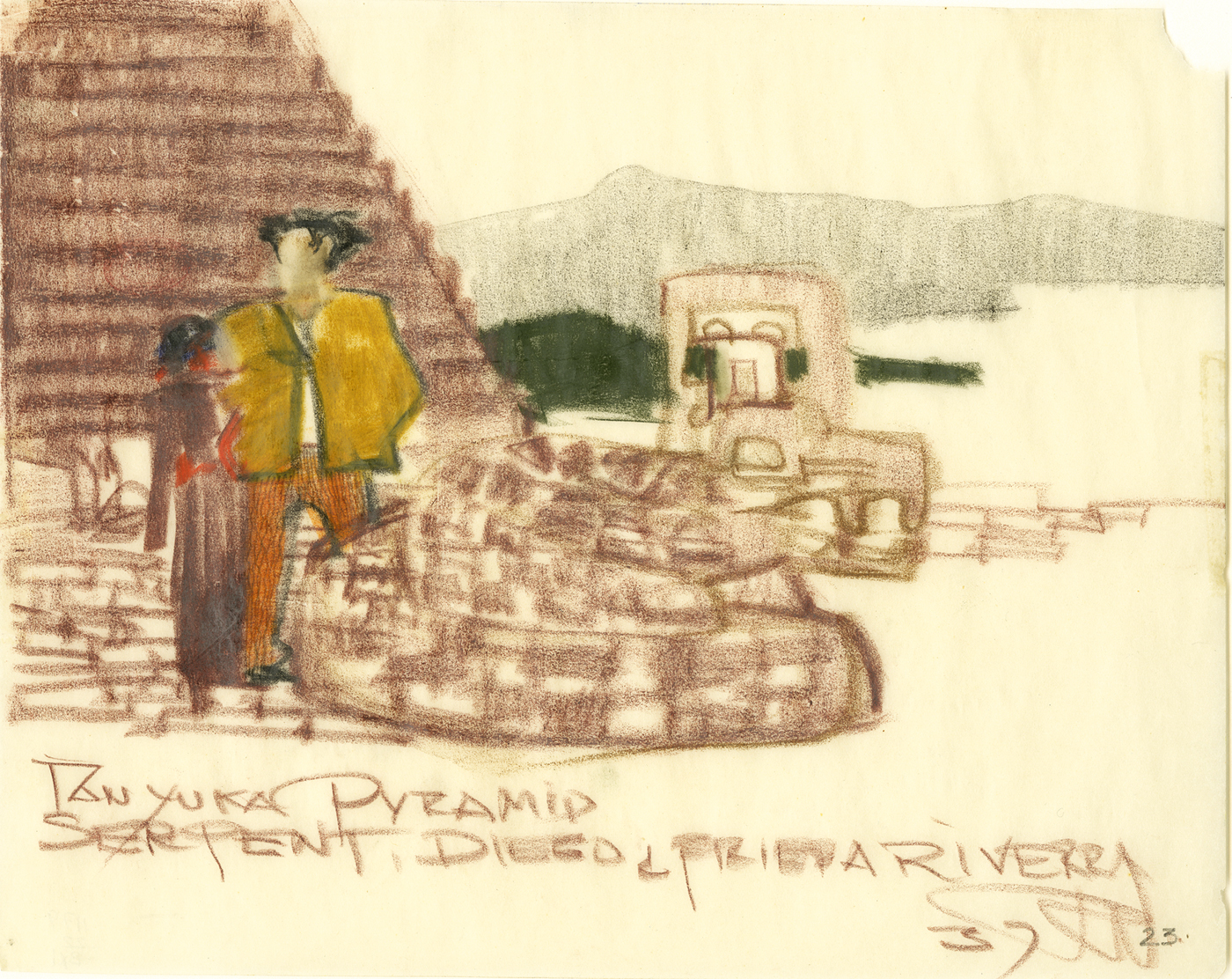
Fig. 9. Richard Neutra, Tan Yuka Pyramid/Serpent Diego & Frieda [sic] Rivera, Mexico City, 1937 (courtesy Dion Neutra, Architect © and Charles E. Young Research Library, UCLA)
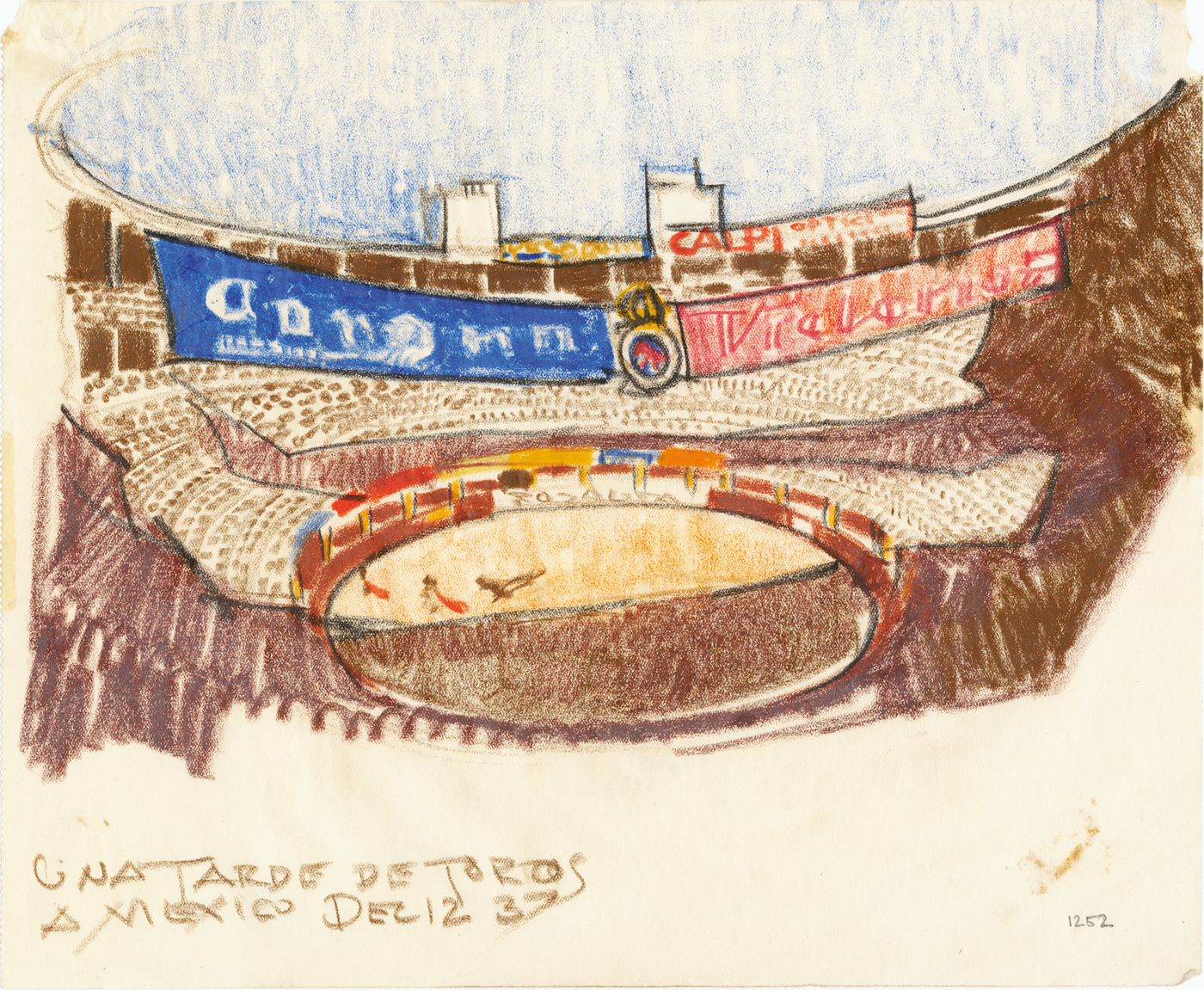
Fig. 10. Richard Neutra, Una Tarde De Toros, Mexico, 12 December 1937 (courtesy Dion Neutra, Architect © and Charles E. Young Research Library, UCLA)
Throughout these visits, Neutra was impressed by the ways in which Mexican architects had successfully synthesized Mexico's history and tradition with its increasing modernisation. During the 1937 visit he also met Juan O'Gorman, who had already completed several projects, notably Rivera and Kahlo's house in Mexico City (1929–30), and who had served as Head of the Architectural Office of the Ministry of Public Education since the early 1930s.Footnote 115 Neutra later visited other O'Gorman projects, not least his Central Library (1950–53) at the National Autonomous University of Mexico (UNAM, Mexico City, designed in collaboration with Gustavo Saavedra and Juan Martínez de Velasco), which Neutra saw in 1957.Footnote 116 He was also familiar with the works of José Villagrán García, who, from the mid-1940s to the mid-1950s, collaborated with O'Gorman, Enrique del Moral, Mario Pani, Carlos Lazo and others to design the campus and buildings of UNAM.Footnote 117 In 1952, Neutra commended Villagrán García for building Modern architecture in Mexico as early as 1925, precisely the same moment as Neutra himself had been struggling to reconcile his own Modern ideas with the revival of the Spanish Colonial style that prevailed in California.Footnote 118 Likewise, he probably also appreciated the fusion of Mexican history and Modern architecture that is evident in Pedro Ramírez Vázquez's acclaimed National Museum of Anthropology and History, which was completed in Mexico City in 1964, only months after Neutra lectured at the International Congress of Architects there, in 1963.Footnote 119
During his visits to Mexico, Neutra discovered, as Obregón Santacilia has explained, that even in the earliest days of the colonial period, Mexican architecture had demonstrated a synthesis of the cultures of various indigenous groups and the Spanish colonisers. As evidence, Obregón Santacilia has cited examples of architectural ornamentation from buildings built across Mexico from the sixteenth to the nineteenth centuries.Footnote 120 Neutra's appreciation of this fusion was plainly evident to Irving Myers, who, in 1950, was awarded a fellowship by the National Institute of Fine Arts of Mexico to study contemporary Mexican architecture, the result of which was his book of 1952 Mexico's Modern Architecture.Footnote 121 In this book, he acknowledged Neutra ‘for guidance, encouragement and inspiration over a period of years’, and he invited him to write the introduction.Footnote 122 There, Neutra remarked that, because of ‘their consciousness of the past fused with the problems of the present’, Mexican artists such as Rivera, Kahlo and O'Gorman were unrivalled on the international scene, and that ‘Mexico is beginning to take its deserved place in the civilization of industrial technology, [and] it has almost simultaneously rediscovered new values in its pre-European past.’Footnote 123
Geographically, Mexico was the Latin American country nearest to Neutra's home in Los Angeles, but it was not his only frequent travel destination south of the border. In the early 1940s, he was commissioned by the Committee on Design of Public Works of Puerto Rico, and specifically through the person of Rexford G. Tugwell, the island's governor.Footnote 124 In this commission, Neutra served as lead architect for a comprehensive project to design prototypes for public facilities in Puerto Rico, including schools and rural health centres for more than 150 locations across the island, as well as five large hospitals, staff housing and a home for young girls.Footnote 125
For the editors of Architectural Forum who, in 1945, ran a feature article on this project, Neutra had been the obvious choice for this commission, because of his ‘unique design approach’, in which ‘architectural treatment was entirely compatible with the warm tropical climate’.Footnote 126 In a 1944 article written by Neutra himself and published in Survey Graphic, he expressed the view that his appointment as this project's director of design had resulted from his own ‘considerable experience as an architect in the tropics’, which is clearly a reference to his work in other former Spanish colonies.Footnote 127 Prior to the publication of this article in 1944, all of Neutra's built work in warm or semi-tropical climates had been located in California, Texas and Florida.Footnote 128
As was the case in Mexico, Neutra was keenly interested here in the island's historic architecture and its people. The many travel sketches he recorded during several visits to the island in 1944 and 1945 include historic buildings such as small cottages and the San Patricio church (both in Loiza), as well as the Cathedral of San Juan.Footnote 129 He also sketched several of the island's natural features, such as the El Yunque Forest, beaches and tropical vegetation.Footnote 130 This two-year project, in addition, facilitated direct contact between him and the island's people, and he also developed professional relationships with Puerto Rico's most talented young architects.Footnote 131 As for the buildings he designed for the island, these reflect his study of elements of local Puerto Rican culture. Thus, when planning the three prototypes for health centres, he situated the milk dispensary, a programmatic function that would serve as a natural community gathering point, between an enclosed children's play patio and an outdoor extension of the interior waiting room (Fig. 11). He described these twin exterior spaces as:
a spacious porch with a concrete bench running around it as a place for meetings, lectures, entertainments, and broadcasts for the mountain community. Our purpose was to avoid any institutional character, making these buildings genuinely belong to the people. Here they can play their dominoes, strum their guitars, and dance—and incidentally, learn something about child care, diet, and more practical housekeeping.Footnote 132
Prior to his time in Puerto Rico, Neutra had used several small porches in single-family residences, such as the sleeping porches of the Lovell Health House and the VDL Research House, but he had never employed them to house community activity on a large scale. Subsequently, in his Eagle Rock Park Clubhouse (Los Angeles, 1953), designed in collaboration with his son Dion, he replicated these twin ‘spacious porches’ as two exterior spaces that flank the indoor community room and play hall (Fig. 12). As with the Puerto Rico health centres of the previous decade, these porches were intended to provide flexible spaces that allow for diverse, everyday activities to occur, seamlessly, indoors and out.Footnote 133 Echoing his own description of the ‘spacious porches’ in Puerto Rico, Lamprecht has described the porches at Eagle Rock as ‘a delight for children playing underneath them in rain or sun’.Footnote 134
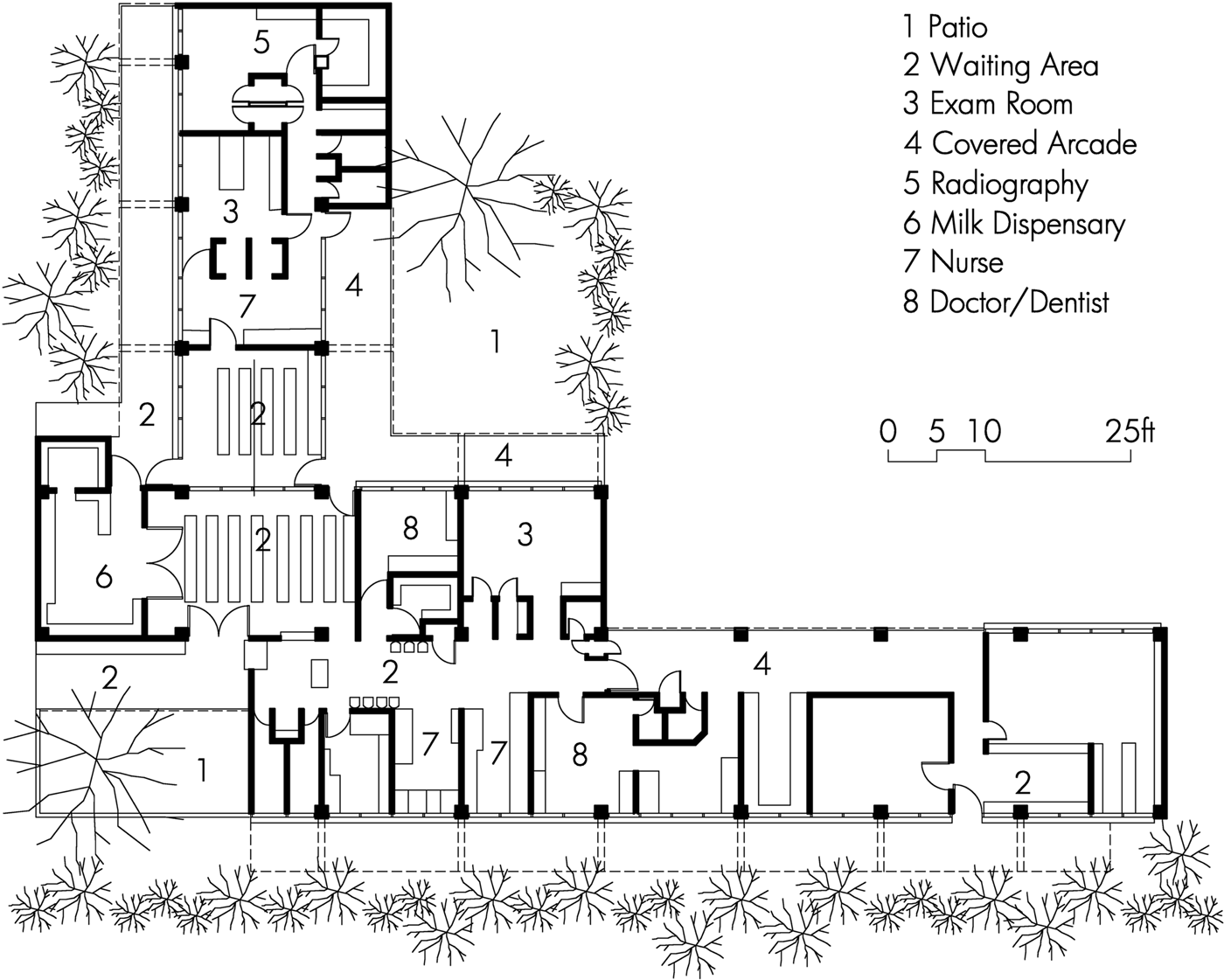
Fig. 11. Richard Neutra, plan of ‘B’ Type Urban Health Center, Puerto Rico, 1944 (as redrawn by author after the original)

Fig. 12. Los Angeles, Richard Neutra's Eagle Rock Park Clubhouse, showing the ‘play porch’ along the building's east side (photograph by Julius Shulman; courtesy Dion Neutra, Architect ©; and © J. Paul Getty Trust)
Immediately following his work in Puerto Rico, in 1945, Neutra travelled throughout various regions in Latin America as an official envoy of the US Department of State (Fig. 13); and in 1946 he published his ‘observations on Latin America’ in Architectural Forum, whose editors declared ‘that Mr. Neutra's opinions should be stimulating to both North and South American readers and […] they have significant bearing on the over-all problems of planning in general’.Footnote 135 Notwithstanding any covert political agenda the State Department might have had for this purportedly goodwill tour, Neutra himself had understood it as a mutual exchange of ideas, in which he had as much to learn from his Latin American counterparts as they did from him:
It is interesting to speculate on how much different cities and regions might profit from the exchange of ideas and comparison with the experiences of others. Such cross fertilization can start with simple questions: What are the new problems with you and with us? On what might additional emphasis be placed here and there? What, outside of established local routine, might be tackled to advantage?Footnote 136
Warchavchik likewise concluded that this tour was as instructive for Neutra as it was for Latin America's architects. He described Neutra as ‘a receptive artist, whose crayon miraculously fixed pictorial notes into his travel sketchbook’, and as a
deeply agreeable human being, irradiating his specific kind of sympathy, unselfishly helpful, a man warmly admiring the work of other creative men, and still—instinctively and without faltering—wandering along his own path and lifeline.Footnote 137
The ‘observations’ Neutra made on this tour also reveal that he was impressed by advances currently being made in the region, such as Modern city planning strategies that included the progressive, pre-emptive action exercised by the planners of Brazil's coastal towns, and which had been designed to protect local beaches from ‘metropolitanization’ and over-development.Footnote 138 He also discovered that, in locations as diverse as Monterrey, Buenos Aires and Sao Paulo, the building trades had overcome the inability to import high-tech, mass-produced goods from more developed countries by inventing new manufacturing processes and building infrastructure in ways that were uniquely suited to the local context.Footnote 139 He observed that:
The current lack of certain materials and equipment has made Mexican, Argentinian, and Brazilian manufacturers inventive; their AVANT-GARDE architects, experimental; their engineers, daring; and their building ordinances (in some cases), very open-minded. Much has been gained; their industry adds considerably to the diversity of world production.Footnote 140
In Buenos Aires, he noted the ways in which the activity and industrial infrastructure of the city's extensive seaport had been integrated successfully with public spaces, a lesson which he encouraged North American architects to learn from their Argentine counterparts.Footnote 141 In Lima, he discovered that, instead of destroying the city's heritage, local architects had used Modern city planning to promote local history by opening ‘vistas to beautiful old structures like the monastery, Las Nazarenas, which for centuries was hidden from view’.Footnote 142

Fig. 13. Richard Neutra, Machu Picchu, 1945 (courtesy Dion Neutra, Architect © and Charles E. Young Research Library, UCLA)
Neutra visited locations both throughout Latin America and in the Iberian Peninsula: Mexico (1925, 1935, 1937, 1951, 1957, 1962 and 1963), Puerto Rico (1943–45), Argentina (1945), Brazil (1945), Panama (1945), Peru (1945), the Dominican Republic (1945–48), Cuba (1945 and 1956), Guatemala (1951 and 1957), Spain (1954, 1956 and 1969), Venezuela (1955), Colombia (1957) and Portugal (1963–64). He documented these places in at least seventy-nine individual travel sketches.Footnote 143 Moreover, he not only visited them, but he also proposed architectural designs for many sites in these countries, including two unbuilt projects for Caracas (in which he collaborated with the internationally-renowned Spanish engineer Eduardo Torroja), the urban design and planning for the Central Redevelopment of the Port of Caracas (1955–57)Footnote 144 and the ‘Trebol la Hayada’ commercial district (Caracas; 1955–57).Footnote 145 He also built the sprawling DeShulthess House (1956) in Havana, and the Gonzales-Gorrondona House (1962) in Caracas.Footnote 146 For the latter of these projects, he collaborated with Spanish landscape architect Eduardo Robles Piquer, who was then in exile in Venezuela following the Spanish Civil War, and who, like Neutra had done elsewhere, used a combination of organic and rectilinear forms to extend the house's interior spaces into the surrounding vegetation.Footnote 147
Neutra also studied the cultures of the Europeans, particularly those from Spain, who had colonised Latin America. He readily acknowledged the distinctions between the various regions in Latin America, as well as the ways in which they had diverged culturally and politically from their former colonisers. Yet he was intrigued too by the historical and socio-cultural values that still linked these regions. In a 1954 lecture in Madrid, he stated that, thanks to these still-evident cultural connections, his frequent visits to Latin America had indirectly prepared him for his first visit to Spain in 1954.Footnote 148 He also claimed that:
This visit has been satisfying for me, and [it is] the fulfilment […] of an old desire. I would like to know more of Spain, but I know it very little, although already before now, from my readings and my professional work, I had a basic knowledge of it.Footnote 149
Immediately following this visit, César Ortiz-Echagüe remarked that Neutra's knowledge about Spanish history, for a foreigner, was surprisingly extensive, and even commented that ‘Philip the Second is an old friend in his cultural world.’Footnote 150 For Neutra, this first visit did not disappoint. Despite spending only a single week in Spain on this trip, he travelled to Barcelona, Granada, Madrid, Ávila, Segovia and El Escorial, and he experienced at first-hand – with several of Spain's most noteworthy architects as guides – many treasures of Spain's architectural past. With Rafael de la Joya, he toured the prime example of MoorishFootnote 151 architecture, the fortress-palace of the Alhambra in Granada;Footnote 152 with Carlos de Miguel, in Madrid he visited Juan Bautista de Toledo's El Prado palace (by then a museum) and watched a bullfight, which his wife Dione described as ‘a most interesting experience’;Footnote 153 and with Ortiz-Echagüe and Miguel Fisac, he visited the city walls of Ávila, the Roman aqueduct in Segovia and the monastery-palace at El Escorial, which interested him so much that he requested to visit it again a few days later with Modesto López Otero (the director of the School of Architecture in Madrid).Footnote 154 Among the famous buildings forming the complex at El Escorial, he was most captivated by the Basilica of San Lorenzo, and Ortiz-Echagüe later recounted that, for Neutra, ‘this church was one of the best in the world, if not the very best among those that he had seen.’Footnote 155
After returning home to Los Angeles, he wrote to Fisac that ‘we loved your country and certainly hope we may see you all again.’Footnote 156 During this visit, Neutra had explored the rich tradition that, for centuries, had produced the buildings and cities that had inspired much of the historic architecture he had been studying for years in California and Latin America. Despite the astonishing number of important sites he toured, he was still disappointed that the brevity of this first visit had not afforded him the opportunity to develop an intimate understanding of Spanish architecture and culture, taking the view that ‘first you need to become acquainted with the people, […] absorb their way of thinking and feeling, and then try to comprehend their architecture.’Footnote 157
However, a new opportunity was not long in coming. In 1956, a team of over forty Spanish architects and engineers invited Neutra to take the lead in designing prototype housing units (unbuilt) for US Air Force personnel stationed in four locations in Spain.Footnote 158 Apparently, his Spanish collaborators had selected Neutra to head the team for two reasons. First, they had hoped that his name would improve their chances of success with the competition's jury. Secondly, they recognised that his interest in their traditions transcended that of an erudite tourist, having seen evidence that he had already successfully merged elements of Modern architecture with the vernacular architecture of California, Latin America and Spain, in his buildings from previous decades. Such amalgamations included the patios at the Corona Avenue School (Los Angeles, 1935), the Kaufmann Desert House (Palm Springs, 1946), the passive ventilation strategies of the Tremaine House (Montecito, 1948), the sun-shading devices of the Northwestern Mutual Fire Association Building (Los Angeles, 1950) and the ‘spacious porch’ of the Eagle Rock Park Clubhouse (Los Angeles, 1953).Footnote 159 For Neutra, it was a rare opportunity to acquaint himself with the Spanish people, and ‘to try to comprehend their architecture’, and integrate Spanish cultural values with his own Modern ideas.Footnote 160
ADAPTING STRATEGIES FROM THE ARCHITECTURE OF LATIN AMERICA AND SPAIN
In the September 1965 issue of the Madrid journal Arquitectura, Francisco Prieto Moreno, the leading expert on Spain's Moorish architecture and chief conservation architect for the Alhambra, published an article entitled ‘Coincidencias de Neutra con las arquitecturas orientales’ (‘Correspondences between Neutra and Oriental Architectures’).Footnote 161 There, he identified remarkable similarities between, on the one hand, the Alhambra, the gardens of the Generalife, and the typical Andalusian country house, and, on the other, Neutra's works, such as the Hafley-Moore Houses (Long Beach, 1953), the Kronish House (Beverly Hills, 1955) and the Slavin House (Santa Barbara, 1956). He attributed such ‘correspondences’ to a similar sense of human scale and to the fact that both Neutra and Spain's Moorish architects had adapted architecture to the natural condition of the site.Footnote 162 In both Neutra's work and Moorish architecture, he also discovered an analogous use of vegetation, and translucent privacy screens and features exploiting sun and shade patterns, as well as the seamless connection of interior and exterior spaces.Footnote 163 For Prieto Moreno, Neutra's attempts to reconnect the human being to nature, which had been initially inspired by his reading of Wundt, also paralleled the ‘vegetative ideal’ as defined by the Spanish philosopher José Ortega y Gasset (1883–1955), which Prieto Moreno described as a rejection of perfect geometry (and rules involving the Golden Section) as determinants of architectural form, in favour of an architecture that used natural elements and organic shapes to stimulate the senses.Footnote 164
Perhaps because of the high level of celebrity that Neutra, by 1965, had gained in Spain and Latin America, Prieto Moreno side-stepped any implication that Neutra's use of such concepts in his own work might, in any way, have been actually inspired by Spain's Moorish architecture. However, these supposed correspondences between Neutra's work and vernacular architecture of Latin America and Spain were no mere coincidence, because, instead, they had resulted from his study of these regions. The Spaniard Fernando Higueras remembered that, during his visit to the Escuela Técnica Superior de Arquitectura in Madrid in 1954, Neutra had publicly acknowledged that ‘the true spatial essence of my work is extracted from the architectural heritage of Spain, especially [from] the Alhambra of Granada.’Footnote 165 Likewise, in his 1954 book Life and Human Habitat, he compared the shared green spaces of his 1942 Channel Heights project and his unbuilt Elysian Park Heights project (Los Angeles, 1949–59) with the plazas and patios that he had visited and sketched during his travels in Mexico, Peru and Cuba.Footnote 166
From his studies of buildings in the American Southwest, Latin America and Spain, Neutra had adapted three architectural strategies to deal with life in warm climates: sun-control devices, ‘sub-soffit ventilation’ in which the exterior wall stops short of the roof deck to allow continuous air exchange, and the interior patio as a means of uniting interior and exterior spaces. In a 1946 article in Progressive Architecture, he claimed that, since the early 1930s, he had been experimenting with shading strategies, although, by his own admission, he ‘did not pursue [these] ideas to an ultimate conclusion’.Footnote 167 The two-year project in Puerto Rico (1943–45) and his 1945 tour through Latin America had then given him the opportunity to study the elegant, efficient sun-control devices that had been used on Modern buildings in Buenos Aires, Sao Paulo, Rio de Janeiro and Pampulho. The movable vertical louvres, designed and patented by the Argentinian architect and city planner Julio Villalobos, had particularly interested him, and he used his article to promote Villalobos's sun-control devices to North American architects.Footnote 168 He also noted that this device had been used widely throughout Latin America, such as by Jorge Ferrari Hardoy and Juan Kurchen in Argentina, and Oscar Niemeyer and Eudardo Agusto Kneese de Mello in Brazil. Neutra also highlighted the ‘glass louvers operated by concealed cables, roll shutters and mechanized, custom-built metal sash and doors’ designed by Warchavchik and Wladimir Acosta for buildings in Brazil.Footnote 169 He himself then began to incorporate sun-shading louvres into his own projects. Their earliest applications are in his Kaufmann Desert House (1946), the Northwestern Mutual Fire Association building (1950; Fig. 14) and the second VDL Research House (1966; Fig. 15), which all postdate the studies he conducted of such devices during his visits to Puerto Rico and other parts of Latin America between 1930 and 1945.

Fig. 14. Los Angeles, Richard Neutra's Northwestern Mutual Fire Association, showing sun-shading devices (author's photograph, 2009)

Fig. 15. Los Angeles, Richard Neutra's VDL Research House II, showing vertical sun-shading devices at far right (author's photograph, 2009)
According to Dion Neutra, the two-year experience in Puerto Rico was pivotal for his father. There, Neutra had learned, for example, the need for adequate consideration of trade-winds and their implications for architectural design, as well as a correct response to other ‘natural conditions’, such as topography, orientation, vegetation, climate and sun shading.Footnote 170 He had already used cross-ventilation as a cooling strategy prior to his work in Puerto Rico, in projects such as the 1935 Corona Avenue School; but in Puerto Rico he refined this strategy. Inspired by local climate-responsive techniques of natural ventilation that take advantage of ‘the prevailing breezes, which are such a boon to the island’, he developed what he referred to as ‘sub-soffit ventilation’ (Fig. 16), in which the voids between the roof's concrete T-joists are left uncapped at both ends, allowing warm air to be drawn quickly out of the interior spaces by prevailing breezes.Footnote 171 He replicated this system in his Tremaine House in Montecito, California (1948), although this time filling the voids between the concrete T-joists with openable glazing.Footnote 172 He believed that the strategies for tropical climates he had developed during his time in Puerto Rico were so appropriate for sites in warm humid zones of Latin America that, in his 1948 book Architecture for Social Concern, he promoted the results of his work on the island as a guide for Modern construction throughout these Latin American regions.Footnote 173
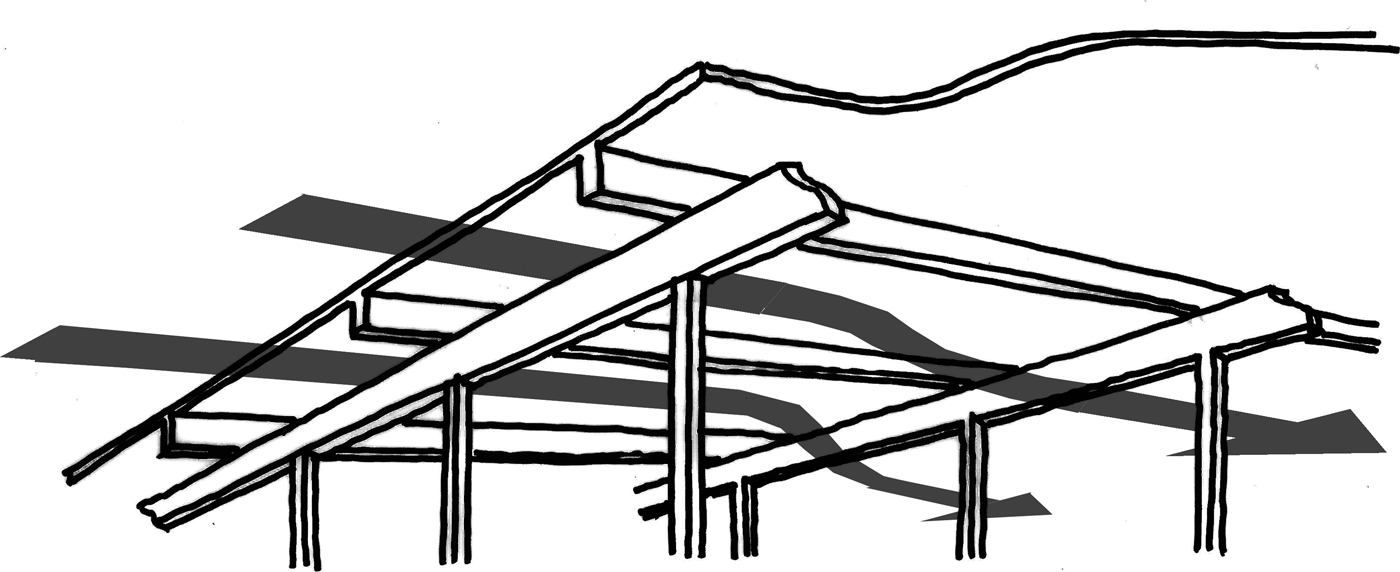
Fig. 16. Richard Neutra, sketch of the continuous soffit vents he designed for buildings in Puerto Rico, 1944 (as redrawn by author after the original)
Neutra was also inspired by the uses of fully-enclosed interior patios, which he discovered during his travels in California, Latin America and Spain.Footnote 174 However, he was not the only architect of central European origin who, in the 1920s and 1930s, exploited the patio as a means of providing exposure to sunlight and fresh air, but without compromising the privacy of the single-family home; Mies van der Rohe's courtyard houses of the early 1930s and Walter Gropius's own house (Lincoln, Massachusetts, 1938), all organise interior spaces around fully-enclosed exterior patios.Footnote 175 In a 1956 article published in House and Home, Neutra acknowledged that the patio had been used commonly in other parts of the world, such as Greece, Rome and Japan, and his sketch diaries indicate that his interest in patios and courtyards had begun long before his initial personal contact with the historic architecture and warm climates of California, Latin America and Spain.Footnote 176 Not surprisingly, Spanish-speaking architects such as Barragán and Josep Lluis Sert had also been inspired by the patios of their own heritages. However, Neutra's central European origin sets him apart in regard to his apparent preference for the patios of Spain and Latin America. In his House and Home article, his search for ancient sources of this spatial prototype is presented as being focused most frequently on civilisations of Spanish or Latin American heritage, such as Altamira (located in Cantabria in northern Spain) and the Incas.Footnote 177 Moreover, while Neutra's patios were, indeed, effective technical solutions for the Mediterranean climate of coastal Southern California, as well as the deserts of the American Southwest, they were also deft interpretations, as McCoy has proposed, of the vernacular forms of Spain and Latin America. For example, she has suggested that the interior patios in Neutra's 1961 Painted Desert and Petrified Forest Visitors Center were inspired by the quadrangle of the Mayan Nunnery at Uxmal (Mexico), which Neutra may have visited in the late 1930s.Footnote 178
The fully-enclosed patio did not emerge as a common theme in Neutra's built work until after his arrival in Los Angeles. The 1923 houses in the Zehlendorf district in Berlin, designed while Neutra was employed by Mendelsohn, are indeed arranged around a loosely-defined exterior space, but this space is not as clearly defined as the fully-enclosed exterior patio that would come to mark his later work in California.Footnote 179 In 1927, however, only two years after arriving in Los Angeles, he designed three projects with fully-enclosed interior patios. First, in his unbuilt schemes for houses on sites in and around Santa Monica, which he designed in the Spanish Colonial style, the dining room, living room and breakfast room open onto a small colonnaded patio.Footnote 180 Second, his first built project in Southern California, the 1927 Jardinette Apartment building, is likewise organised around a tight patio, defined on three sides by the building's façades, and on the fourth by a half-height garden wall.Footnote 181 Third, similar to the Jardinette, his unbuilt Ambrose Apartment building, which he designed in 1927 for another site in Los Angeles, is organised around a ‘garden court’.Footnote 182
Despite its ample natural light and ventilation, the 1932 VDL Research House (Fig. 17) had been more stylistically akin, in its original form, to the International-Style white boxes of the 1927 Weissenhofsiedlung than to Neutra's mature works of the 1940s and 1950s, which seamlessly connect interior and exterior spaces. Nevertheless, a series of buildings Neutra designed subsequently, and before the addition of the VDL Garden House in 1939, reveal an increasing incorporation of interior-exterior spaces, all designed as outdoor rooms reminiscent of Spanish and Latin American patios.
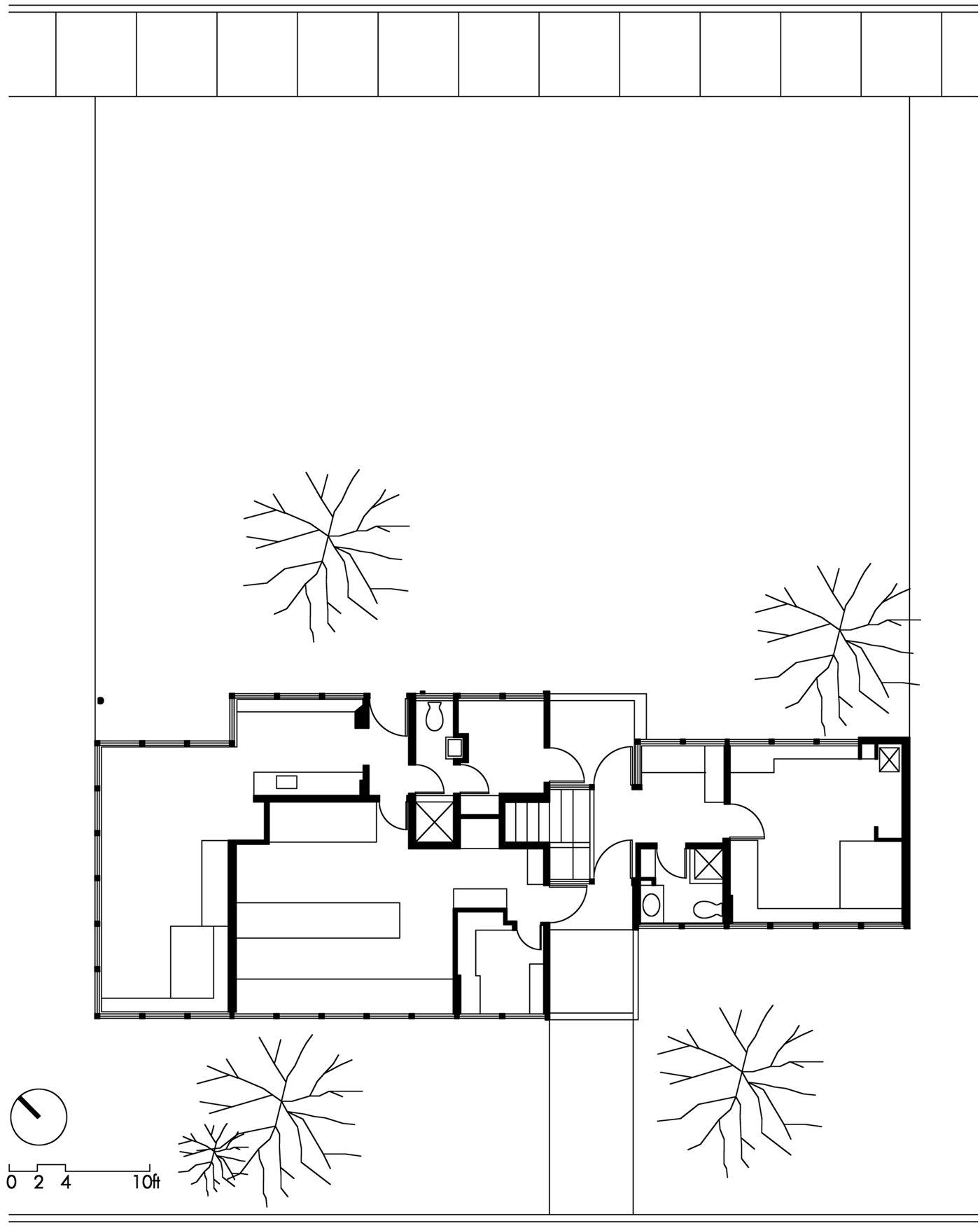
Fig. 17. Richard Neutra, VDL Research House I, plan showing the house as originally designed, 1932 Los Angeles (author's drawing)
Following the VDL Research House, Neutra's little-known, and once more unbuilt, project of the mid-1930s for agricultural workers’ co-operative housing in Riverside, California (Fig. 18) constitutes one of his earliest attempts to use the patio in a small-scale residence as a means of expanding interior space towards the exterior.Footnote 183 Although the project's programmatic and budgetary restrictions did not allow for large interior living spaces, Neutra compensated by incorporating exterior living spaces, which he designed as comfortable outdoor extensions of the interior rooms. With large sliding glass walls, which he had used previously in his Beard House in Altadena (1934), he joined the rows of dormitory rooms to outdoor patios that were completely enclosed by the L-shaped building's two wings, and by a curving hedge to provide privacy. As in Latin American and Spanish patios, these outdoor spaces were shaded by roof overhangs, trees and vegetated pergolas, and they also featured a combination of lawn and paving in order to provide the flexibility to accommodate a variety of activities.Footnote 184
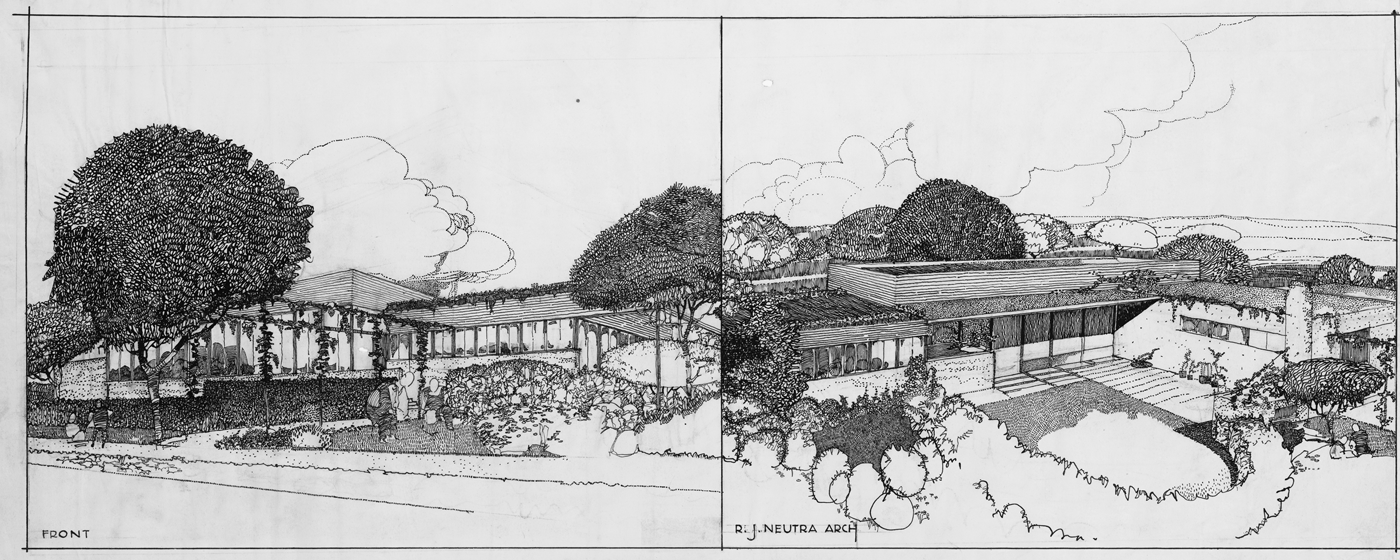
Fig. 18. Richard Neutra, sketch of the Agricultural Workers Cooperative Housing (c. mid-1930s; unbuilt) at Riverside, California (courtesy Dion Neutra, Architect © and Charles E. Young Research Library, UCLA)
Neutra again used the vernacular Spanish and Latin American patio in his 1935 Corona Avenue School (Fig. 19). By using sliding glass walls, he expanded the interior space of each classroom into an adjacent outdoor patio, so that educational activities could move fluidly from inside to outside, and in order to improve student learning and health.Footnote 185 Obregón Santacilia recognised this innovative use of the patio in his 1939 book El maquinismo, la vida y la arquitectura, and he recommended it to his readers as an appropriate feature to incorporate into Modern schools in Mexico.Footnote 186 Throughout the following years, this notion of indoor/outdoor education became a hallmark of Neutra's school designs. It re-appeared in his children's centre for the National Charity League in Los Angeles (1955) (Fig. 20), in his 1956 design for schools for the US Air Force Bases in Spain, in his UCLA Elementary School (Los Angeles, 1957), in his Richard J. Neutra School at the Naval Air Base in Lemoore (1961) and in the Palos Verdes High School (Los Angeles, 1961).Footnote 187

Fig. 19. Los Angeles, Richard Neutra's Corona Avenue School, showing the exterior patio in use (photograph by Julius Shulman; courtesy Dion Neutra, Architect ©; and © J. Paul Getty Trust)
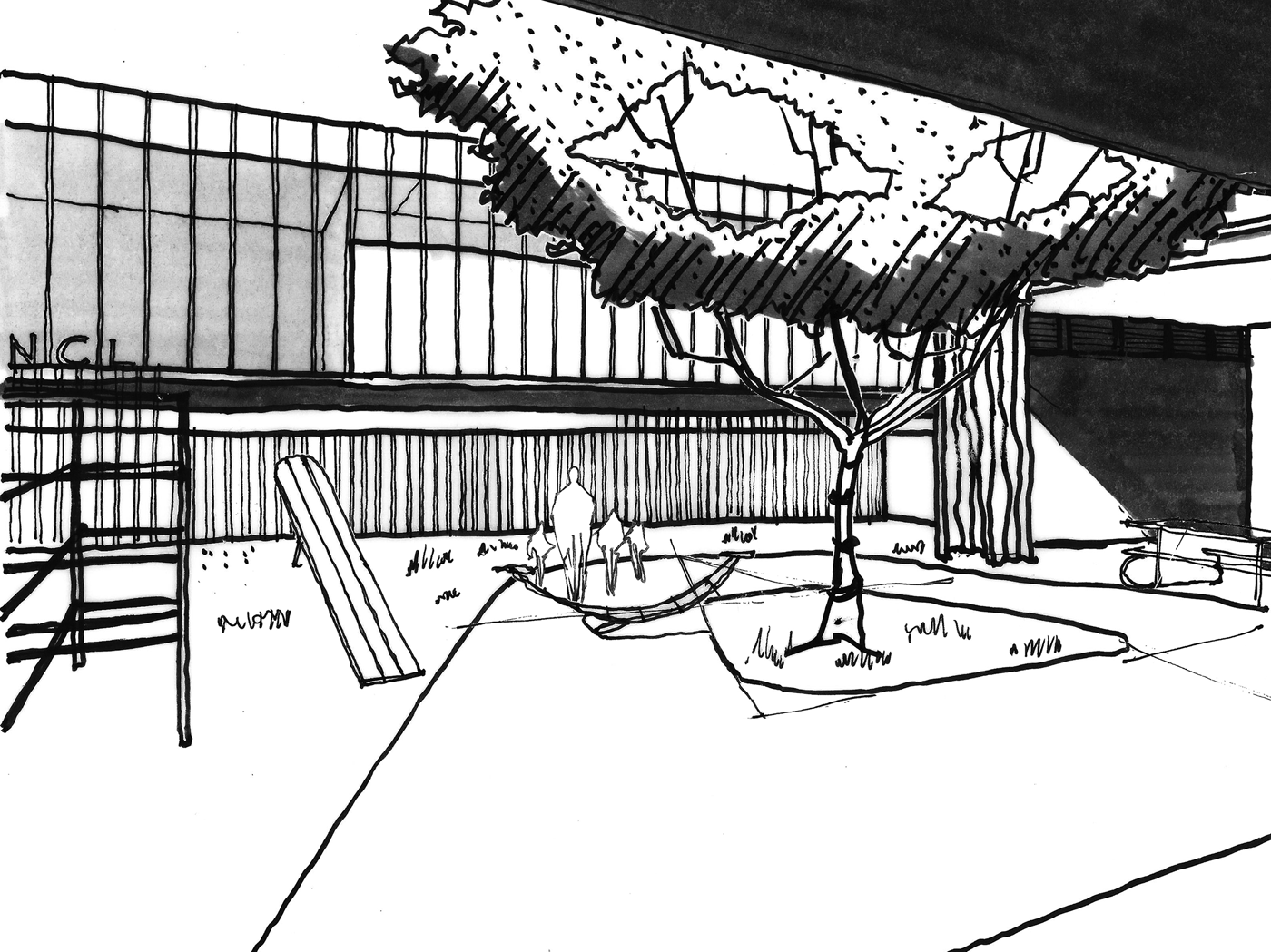
Fig. 20. Los Angeles, Richard Neutra's National Charity League, showing interior patio (author's drawing)
Neutra's appropriation of the patio in his own work evidently crystallised in the 1939 addition to the original VDL Research House. Dion Neutra remembers that when Neutra designed the first VDL Research house (1931–32) he did not plan the future addition of the garden house.Footnote 188 The intervening years between the two projects therefore constitute an evolution in his work: from the pure geometry of the Modernist white box to the diaphanous interior/exterior spaces that characterise his later works. He located the single-storey VDL Garden House along the rear property line, in accordance with what he described as ‘the old Spanish custom’ of building up to the property lines, in order to carve out an interior patio.Footnote 189 He believed that this technique of maximizing available building space had been perfected
on the Island of Capri and in the mountain villages of Spain centuries ago. There a series of patios would supplement skimpy indoor floor areas and provide outdoor rooms separated from the neighbors by walls that assured privacy to each family. A contemporary house can solve the small lot problem in the same way.Footnote 190
The VDL Garden House (Fig. 21) was connected to the original house through a sequence of single-storey rooms that subdivided the property into two patios, one for service functions and the other for family life. The larger of these patios also functioned as the primary access to the interior living room of the Garden House, and it served as an additional exterior living space too.Footnote 191 By means of another sliding glass wall, the new interior living room was then seamlessly joined to the exterior patio (Fig. 22). This patio was designed as a physical and spiritual haven: ‘A patio is very different from a mere terrace. A house surrounded by a garden is one thing, but a house that has an articulated outer extension of the living area is another thing for body and soul.’Footnote 192 Barragán, who enjoyed a week-long stay in the VDL Research House, remembered its patio as the most comfortable space of the house, thanks to its privacy and the inclusion of vegetation.Footnote 193
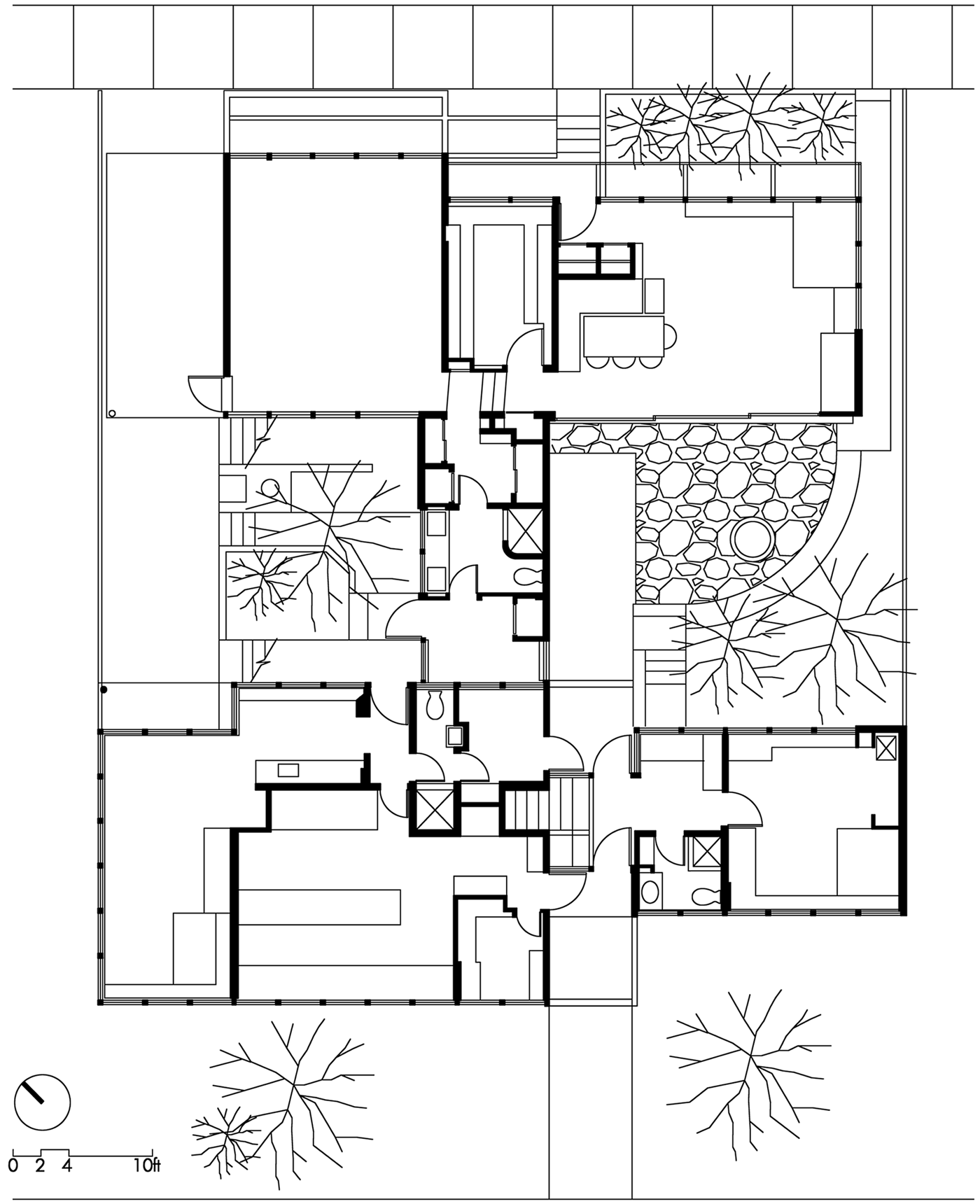
Fig. 21. Los Angeles, Richard Neutra's addition of the garden house to the VDL Research House I (author's drawing)
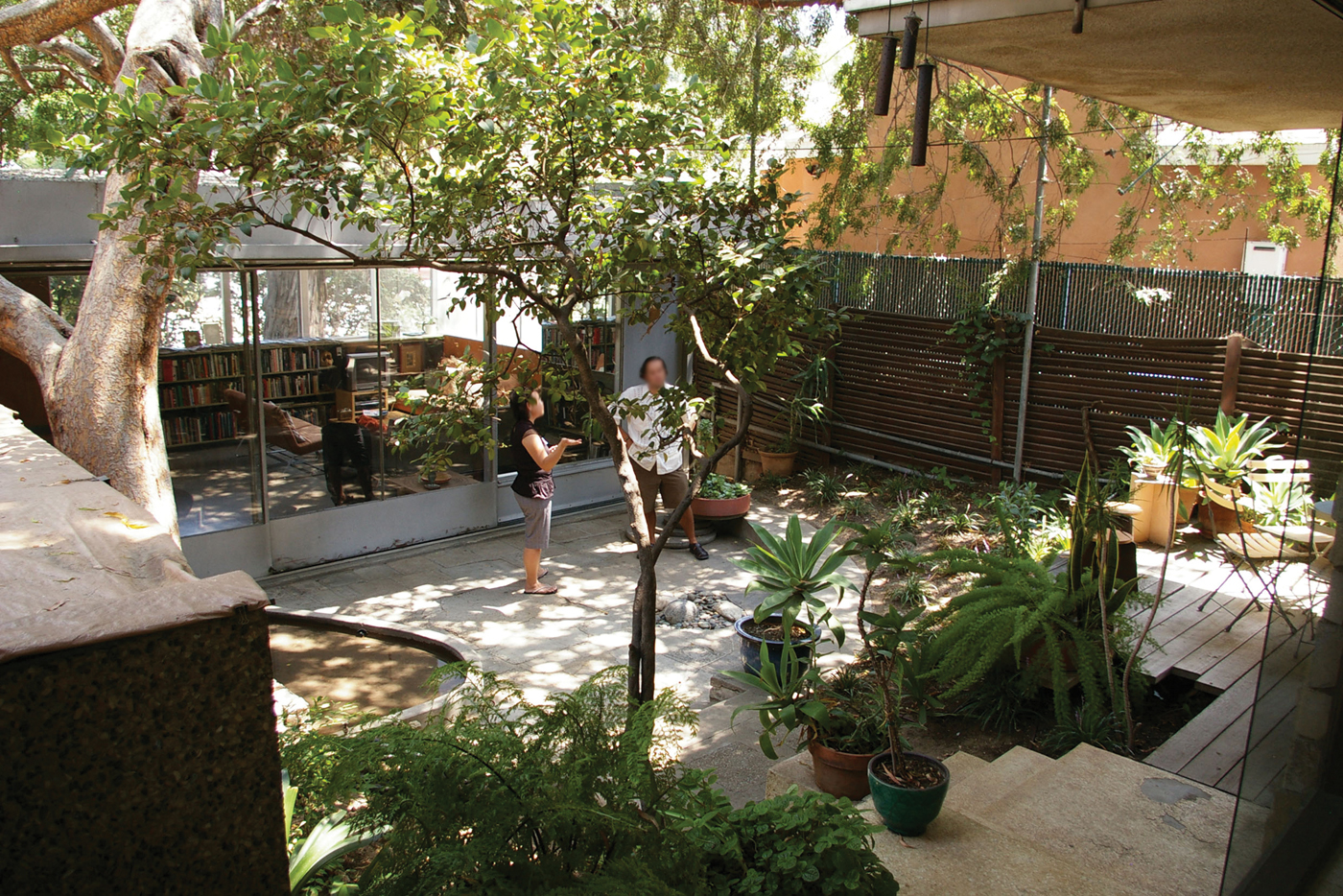
Fig. 22. Los Angeles, Richard Neutra's VDL Research House II, showing the 1939 Garden House in the background and the interior patio as rebuilt in 1966 after the original was destroyed by fire in 1963 (author's photograph, 2009)
In the years following the completion of the VDL Garden House, the fully-enclosed patio continued to appear in Neutra's works. For the 1953 Hafley-Moore houses, Neutra chose to unite these two separate residences with a shared, L-shaped patio and a pergola, and he used large expanses of glass to link the patio to several of the homes’ interior spaces. In his 1956 House and Home article he used the exterior space between the two houses to illustrate the ways in which the patio can be a shared space, while maintaining the requisite privacy of a single-family dwelling.Footnote 194 For Prieto Moreno, the patio of these twin houses was essentially ‘Andalusian’ because of Neutra's skilful use of vegetation to create effects of dappled light and shifting shadows. This feature, in his view, made this space ‘identical’ to the typical Andalusian carmen (walled garden):Footnote 195
The fabric of pergolas, closed and open patios, exterior garden, and swimming pool, with their extremely varied internal environments, recalls, in a great way, the design of the carmen of Granada, charged with Muslim influences.Footnote 196
He also stated that, in the case of Neutra's 1955 Kronish House,
the living spaces are centred in a way similar to [that of] the living spaces in the [Moorish] house, with perspectives in various directions towards interior patios, and towards exterior gardens.Footnote 197
Other Spanish architects were similarly impressed by Neutra's use of the patio, which they also believed to have been derived from their own architectural tradition. In their introduction to Neutra's film The Ideas of Richard Neutra, which premiered in Madrid in 1969, the architects Francisco Zamora and Rafael Alfonso highlighted Neutra's use of the patio as a means of uniting interior and exterior spaces; but they also noted that Neutra's ability to fuse his own ideas of Modern architecture with a spatial configuration that he had learned from their own tradition had ultimately resulted in the creation of an entirely new type of patio.Footnote 198
CONCLUSION
In his ‘search for the southland’, Richard Neutra had learned from a diverse array of global cultures, yet, as this article has explored, a principal source was the shared heritage and local idiosyncrasies of the American Southwest, Latin America and Spain. Years before he emigrated to the United States, he had already demonstrated a keen interest in California, Mexico and other parts of Latin America, which is plainly evident as early as 1914 in his correspondence with Rudolph Schindler. Experts on these regions, such as César Ortiz-Echagüe, Gregori Warchavchik and Irving Myers, remarked that, even before visiting them, Neutra had already studied the architecture of these regions, as well as their diverse climates, geographies, cultural idiosyncrasies, politics, traditions and histories.
Neutra's study of these regions, moreover, was more extensive than that of other architects practising in North America, such as Frank Lloyd Wright, Irving Gill, Rudolph Schindler and Gordon Kaufmann, and it eventually had a profound effect on his own professional work. It is well-known that, during the first several years following his arrival in Los Angeles, he had refined his modernist aesthetic and had produced several of his most internationally-acclaimed, avant-garde projects, such as the 1927 Jardinette Apartments, the 1927–29 Lovell Health House and the original portion of the 1932 VDL Research House. This article, however, has demonstrated that at the same time as he was designing these examples of Modern architecture he was also experimenting with – and sometimes even copying – the forms of the Spanish Colonial style, this being evident in such projects as the 1927 Santa Monica Houses and the 1928 Richmond Civic Centre. Initially, these two trends in his work had seemed to be at odds with each other but, even as early as 1926, he began to utilise sympathetic juxtapositions of forms, as seen in the Modernist gymnasium addition to the Baum house, a Spanish Colonial quinta.
Over the course of his first decade in Los Angeles, following the lead of Wright, Schindler, Gill and Kaufmann, Neutra eventually transcended sympathetic juxtapositions of forms and successfully achieved a synthesis of Modern ideas and the local architectural traditions of California and Latin America, a trait he had appreciated in the work of Mexican architects such as Obregón Santacilia and Juan O'Gorman. At the Lovell Health House, he adapted the Californian sleeping porch for use in a home focused on Modern standards of health, hygiene and exercise. The fully-enclosed patio he had seen on his early tours through California (in the mid-1920s) and his first visit to Mexico (in 1925) emerged as a frequent theme in his work, beginning with the fully-enclosed patio that appeared in the 1927 Jardinette Apartments, just two years after his arrival in Los Angeles. In the 1935 Corona Avenue School, he adapted the open-air patio to suit modern pedagogical models. In the 1937 von Sternberg House (Los Angeles) and the 1939 addition of the Garden House to the VDL Research House, he then appropriated the patio in order to promote the Modern ideal of life en plein air, and to realise fully the fluid connection between interior and exterior space that he had sought ever since his first readings of Wundt's Principles of Physiological Psychology. Even his later works, such as the 1961 Petrified Forest and Painted Desert Visitor's Center, openly referenced the forms of indigenous pueblos of the American Southwest.
Neutra's tours through Central and South America also offered him the opportunity to research architectural strategies for responding to the unique climatic and cultural conditions of subtropical locations. While working in Puerto Rico in the early 1940s he experimented with the ‘spacious porch’ in the prototype health centres that he designed for locations across the island;Footnote 199 the 1953 Eagle Rock Park Clubhouse features similar porches, which Neutra conceived as outdoor extensions of indoor spaces. In Puerto Rico, he had also developed a cooling strategy that he called ‘sub-soffit ventilation’, and which he later used in the 1948 Tremaine House. Prior to his 1945 tour of Latin America he had experimented with sun-shading devices, yet, by his own admission, it was only during this tour that he learned the proper use and application of such devices, which he subsequently exploited in projects such as the 1946 Kaufmann House, the 1950 Northwestern Mutual Fire Association building and the 1966 reconstruction of the VDL Research House.
The fact that Neutra's ‘search for the southland’ had led him to study the architecture and cultures of the American Southwest, Latin America and Spain, and to apply these lessons in his own work, was plainly evident to the architects who were native to or made their own homes in these regions. The Mexican architects Carlos Obregón Santacilia and Luis Barragán, whose own work had represented a fusion of Mexican tradition and Modern ideas, also discovered evidence of this fusion in Neutra's work. Gregori Warchavchik described Neutra as an open-minded artist whose sketchbook reflected a deep understanding of the cultures he visited on his travels through Latin America. Spanish architects also appreciated Neutra's study of their own history and tradition; Francisco Prieto Moreno recognised deep similarities between Neutra's work and Moorish architecture; César Ortiz-Echagüe remarked that, for a foreigner, Neutra was unusually familiar with Spanish history and tradition; and, in 1956, a team of Spanish architects selected Neutra to lead their design of housing for the US Air Force Bases in Spain, in part because he had demonstrated to them that his version of Modern architecture was inherently compatible with Spanish sensibilities.
ACKNOWLEDGEMENTS
For their help in the preparation and publication of this article, I would like to acknowledge the contributions made by the following people. The idea to investigate Neutra's interest in the architecture of California, Latin America and Spain originated in 2009 from my conversations with my doctoral dissertation chair, Dr Miguel Alonso del Val. Thomas Hines and Dion Neutra have also provided critical insight into the subject. I thank the blind referee and Judi Loach for their critique of the ideas and text. I also thank Dion Neutra, the J. Paul Getty Trust, the Getty Research Institute, Thomas Hines and the University of Southern Illinois Press, for graciously granting me permission to publish several of these images, and I thank Simon Elliott and the staff of the Department of Special Collections, Charles E. Young Research Library, UCLA, for their assistance in locating and scanning some of them. Finally, I thank the College of Architecture and Environmental Design and the University Libraries at Kent State University, which provided funding for copyright and reproduction fees.
All foreign-language quotations are the author's translations unless otherwise stated.


























